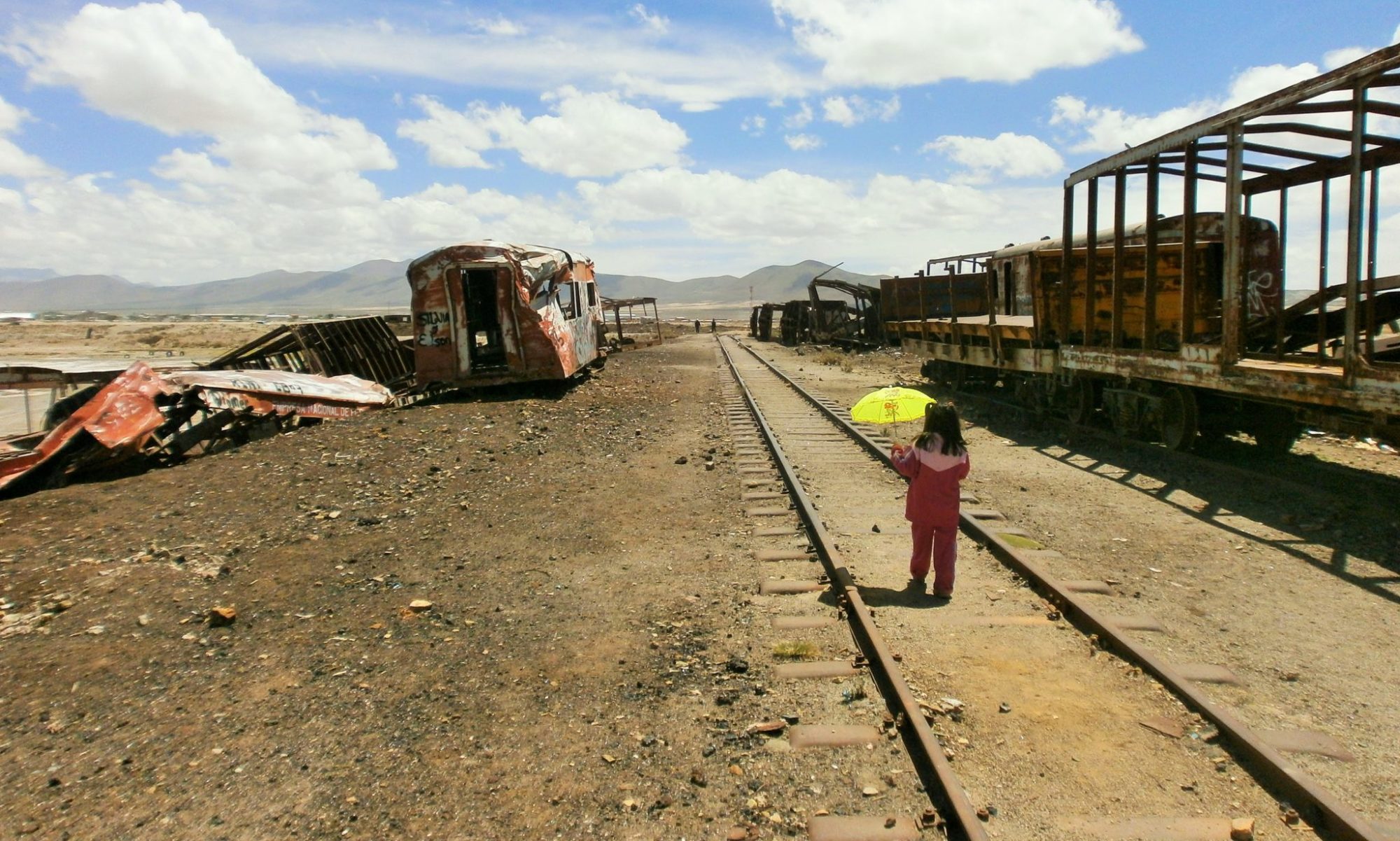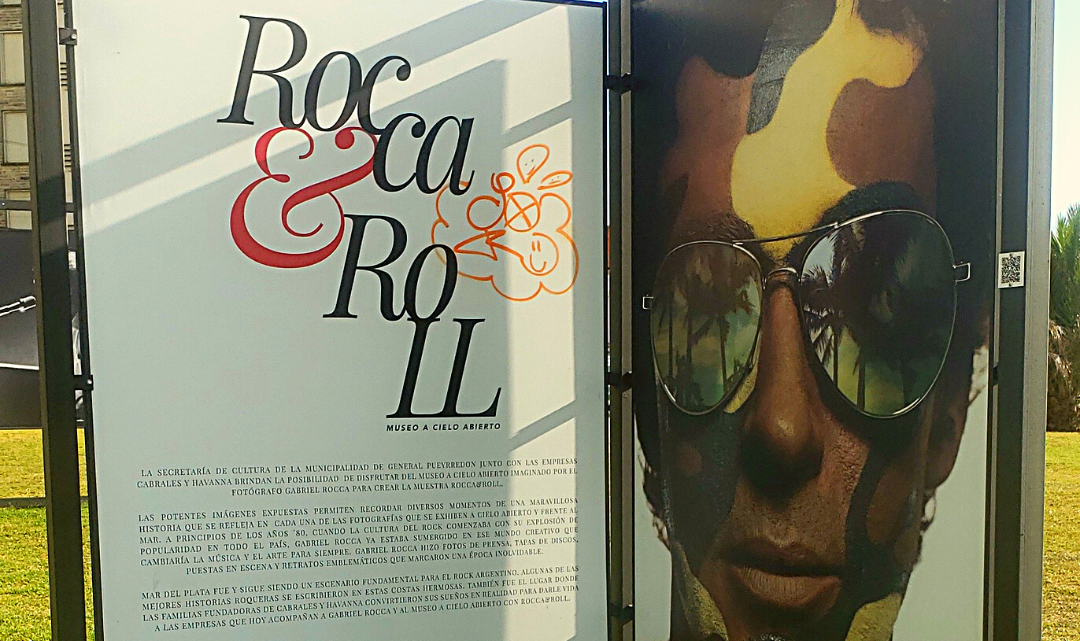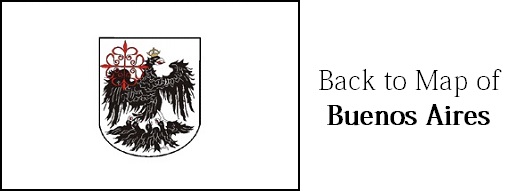Rocca & Roll – Open Sky Museum
GABRIEL ROCCA witnessed the explosion of Argentine National Rock at the beginning of the 1980s, when he was only 19 years old and when the country was going through a military dictatorship in the midst of its horror, which included banning various cultural exhibitions. Despite this, in the spring of 1981 Prima Rock was held in the city of Ezeiza, an open-air youth music festival, and it was there where Gabriel was to photographically document the musicians’ presentations, with his Minolta G9 camera hanging around his neck and having no experience in photography.
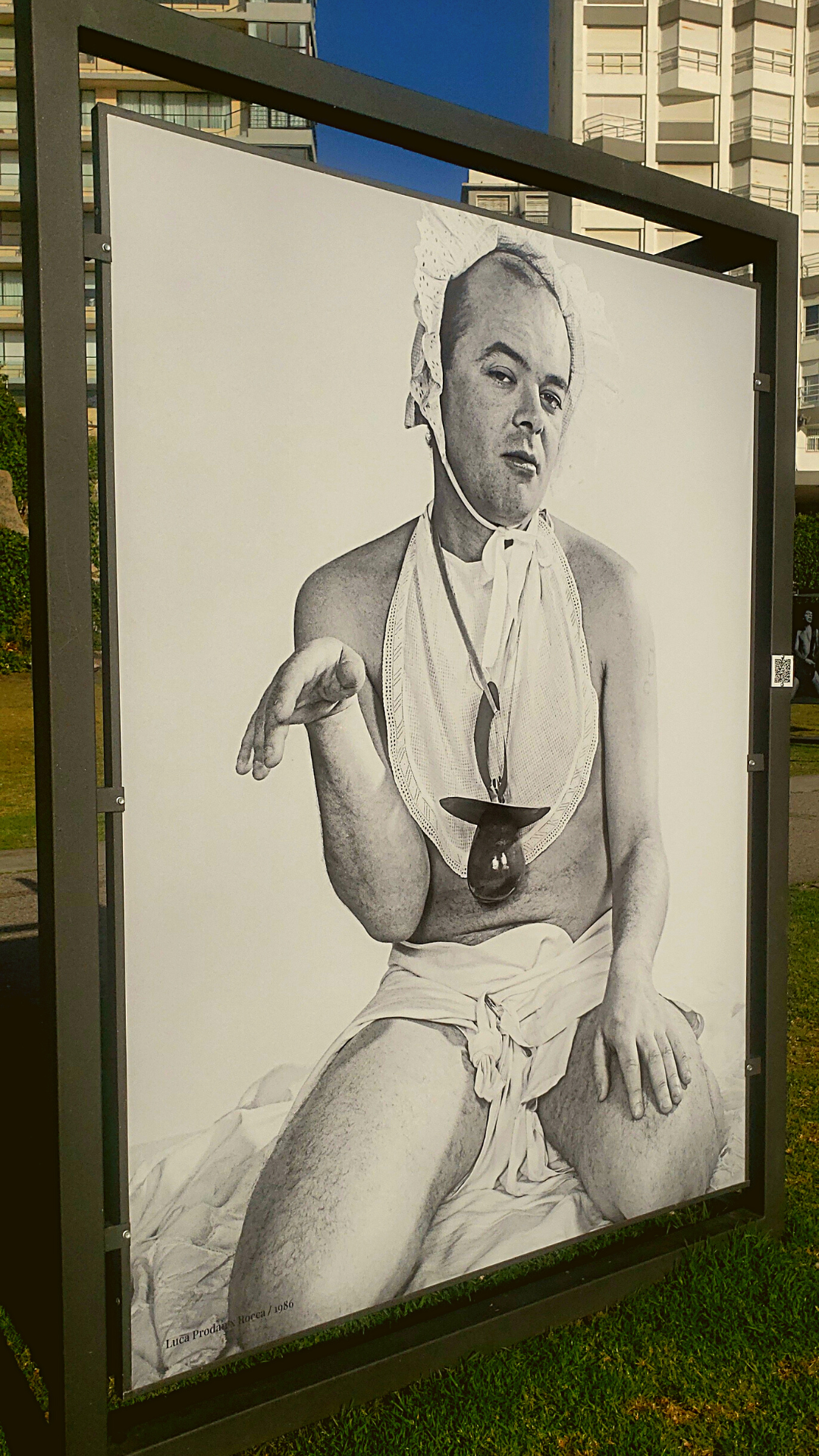
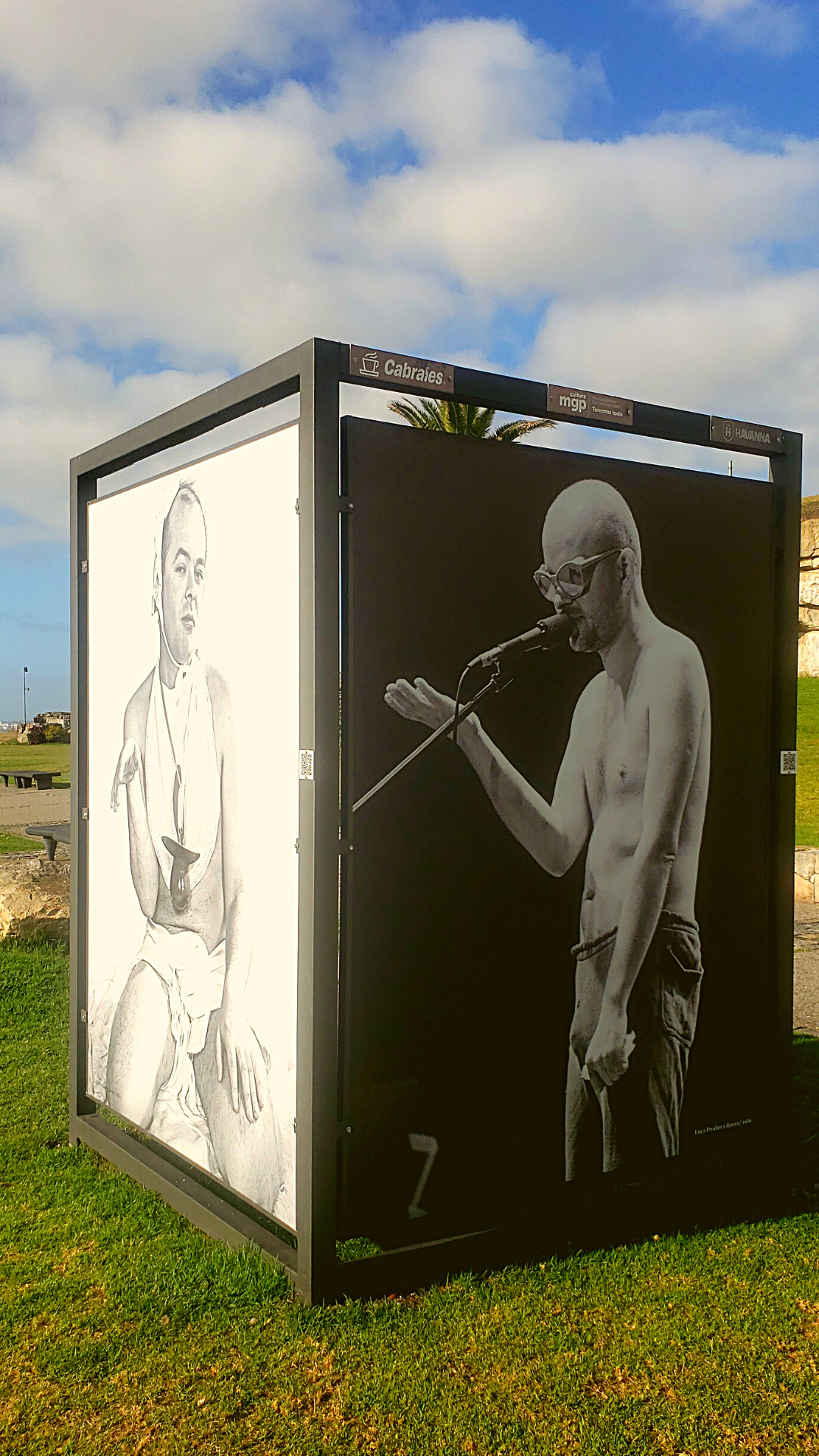
Four decades later, he inaugurated the 2023 season with an open-air exhibition, with free and open access, of his best photographs of that time in the General San Martín Public Park, in the city of Mar del Plata, prior to carrying out two samples of the same material in the Autonomous City of Buenos Aires. The permanent exhibition is called ROCCA & ROLL and is made up of 34 gigantographs of 200 x 150 cm in black and white, most of them are iconic photos from that time that are already part of the collective memory. The photographs are mounted in metal frames, each one with its respective QR code that, when scanned, links us to videos where the photographer together with the specialized journalist MARCELO FERNÁNDEZ BITAR narrate the story behind each photo.
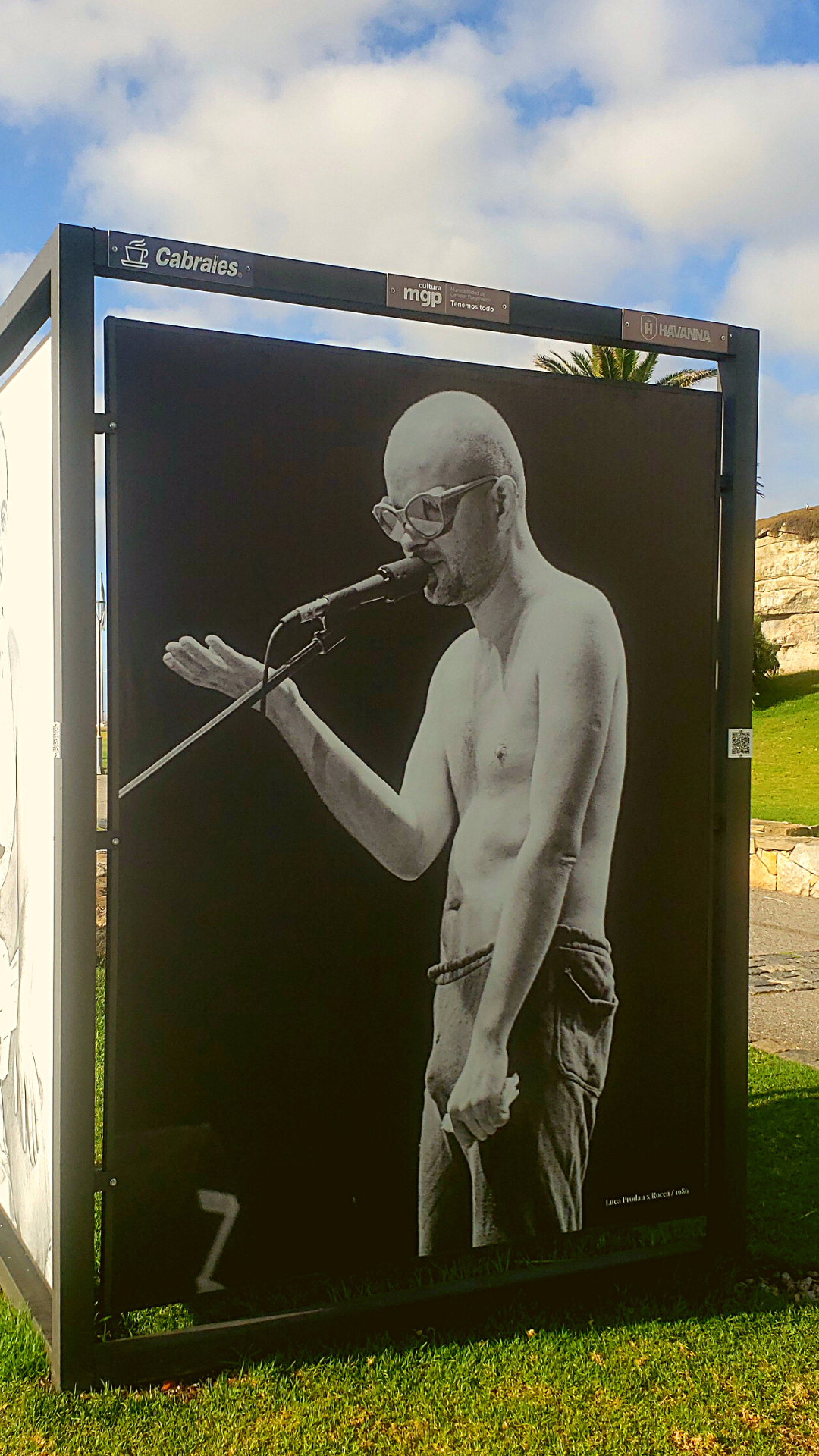
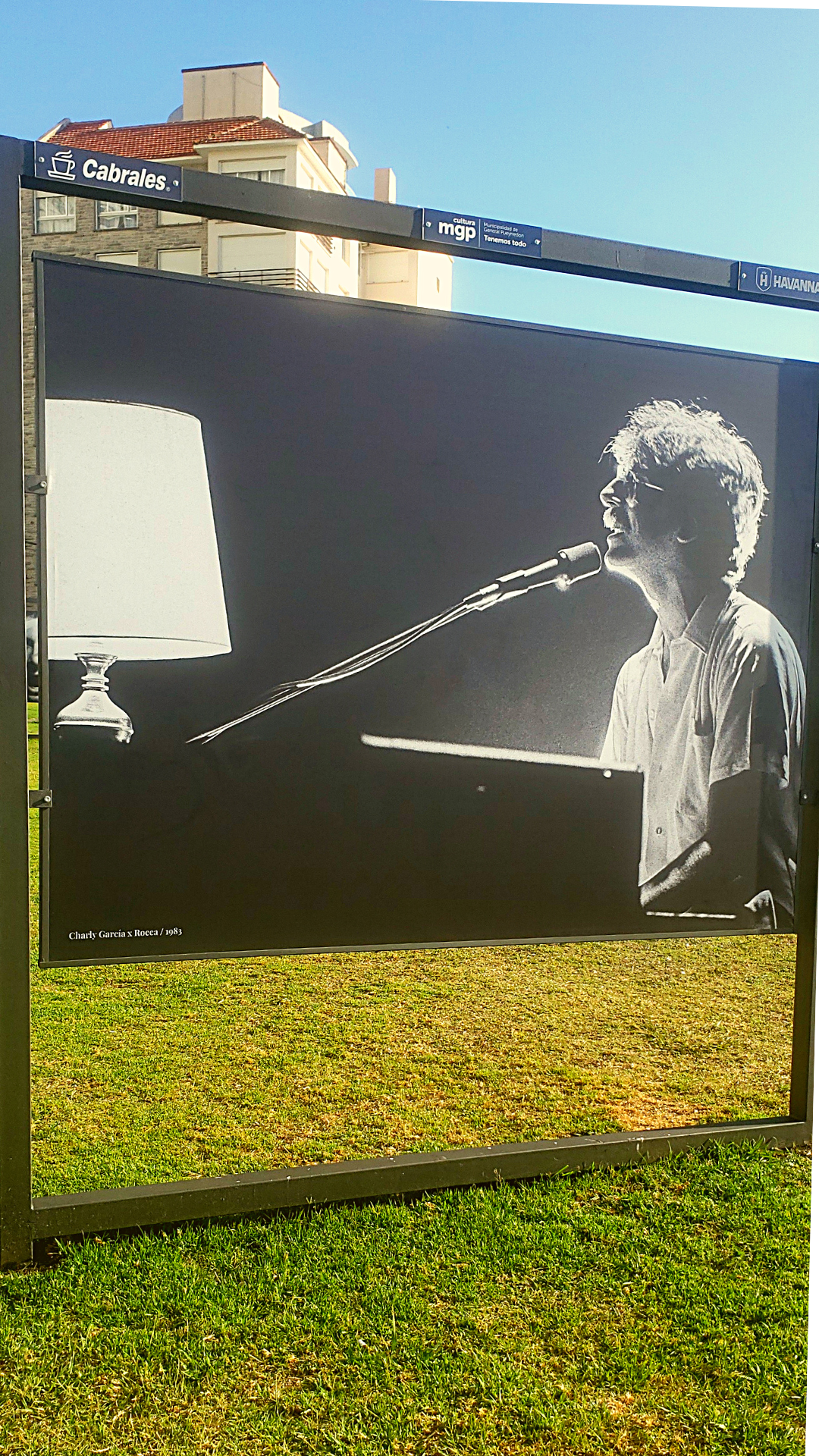
These photos are crossed by the political context of Argentina in those years and most of the artists presented alerted society to what was happening. In this article we show you the hidden stories behind each photographed postcard. The tour of the exhibition begins with a plot of the exhibition, commenting on the details of the Rocca & Roll project and to its left is the first photograph of the late Argentine musician GUSTAVO CERATI, a photo taken by Gabriel for a session in D-MODE magazine in the year 2005. The full note (in Spanish) can be read at Flacostereo.
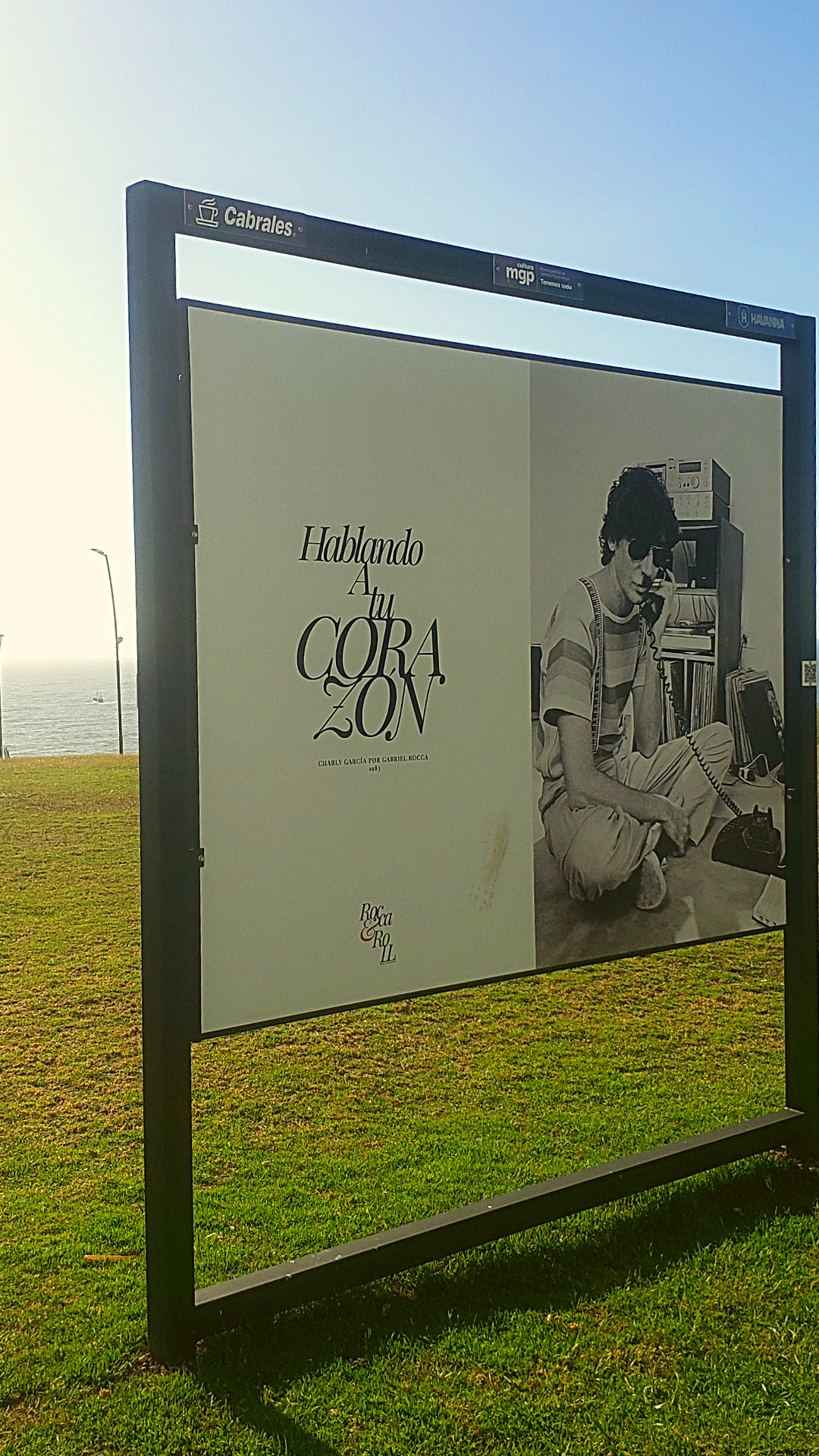
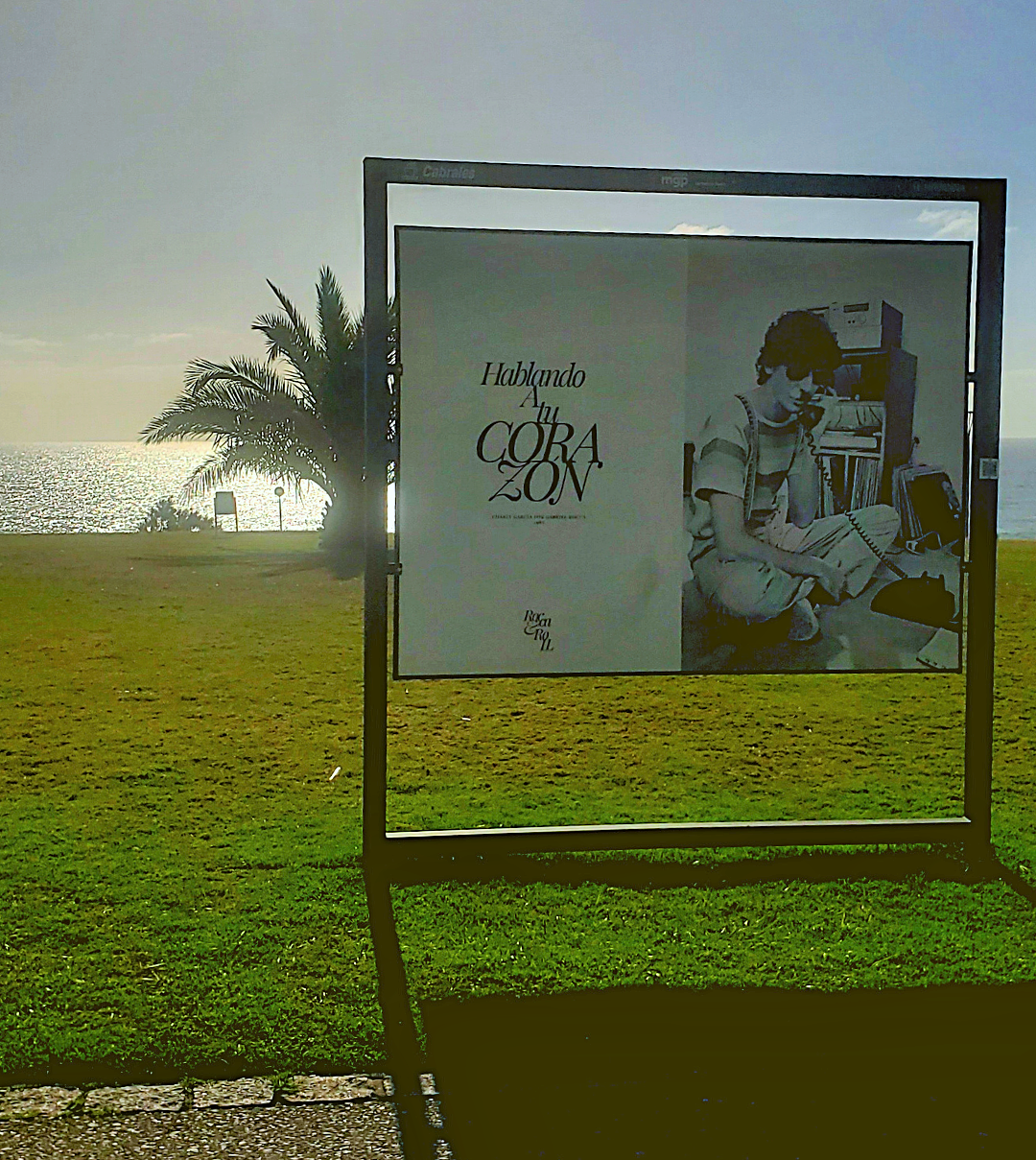
The exhibition continues with a double-sided structure that reflects two versions of the emblematic Luca Prodan, an Italian-Scottish musician who died in 1987, singer of the band Sumo, with a high impact in the history of Argentine rock. The 1986 production shows Luca disguised as a baby, in search of his alter ego, and the image is counteracted with the antagonistic version of his leading role on stage.
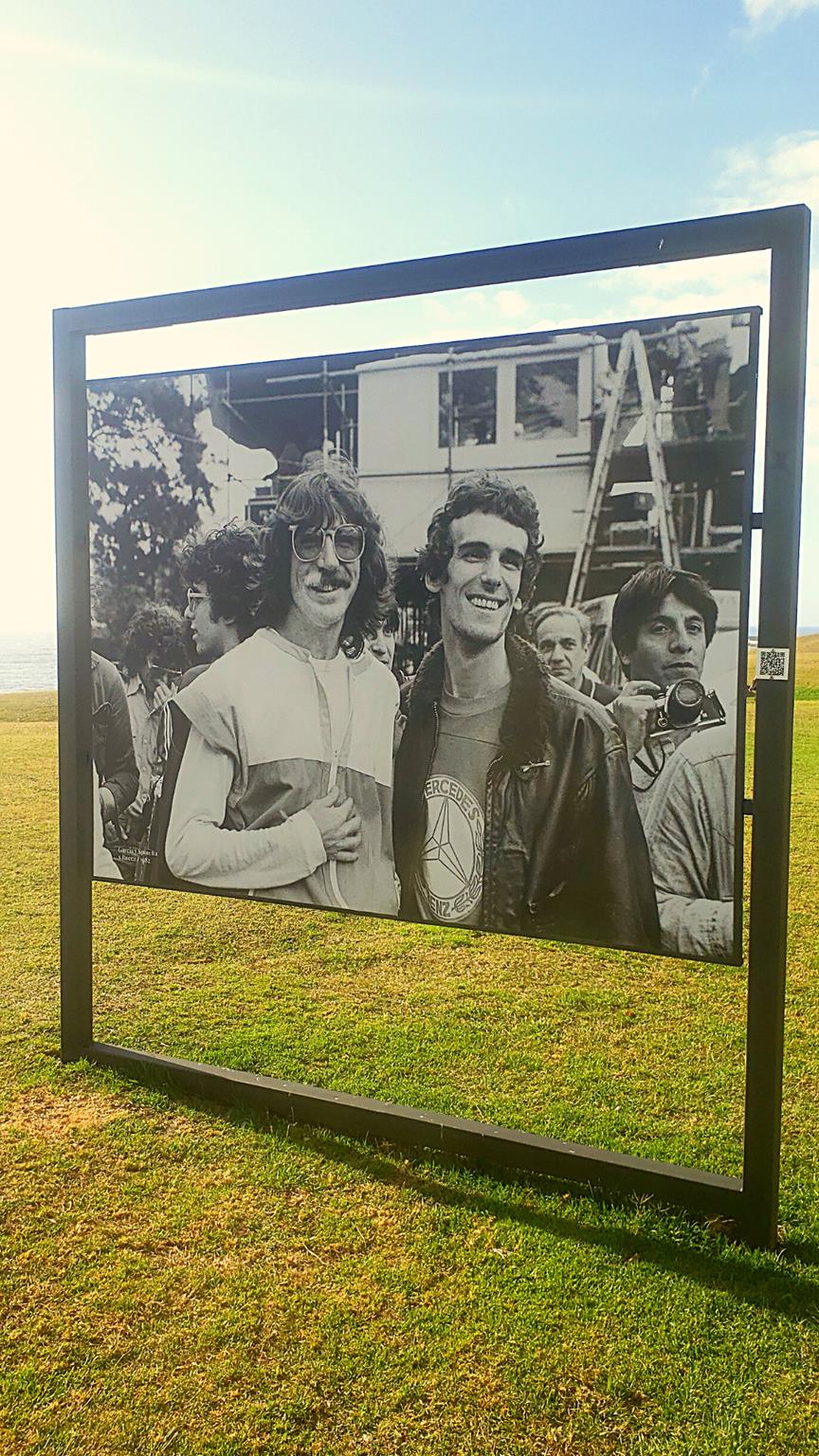
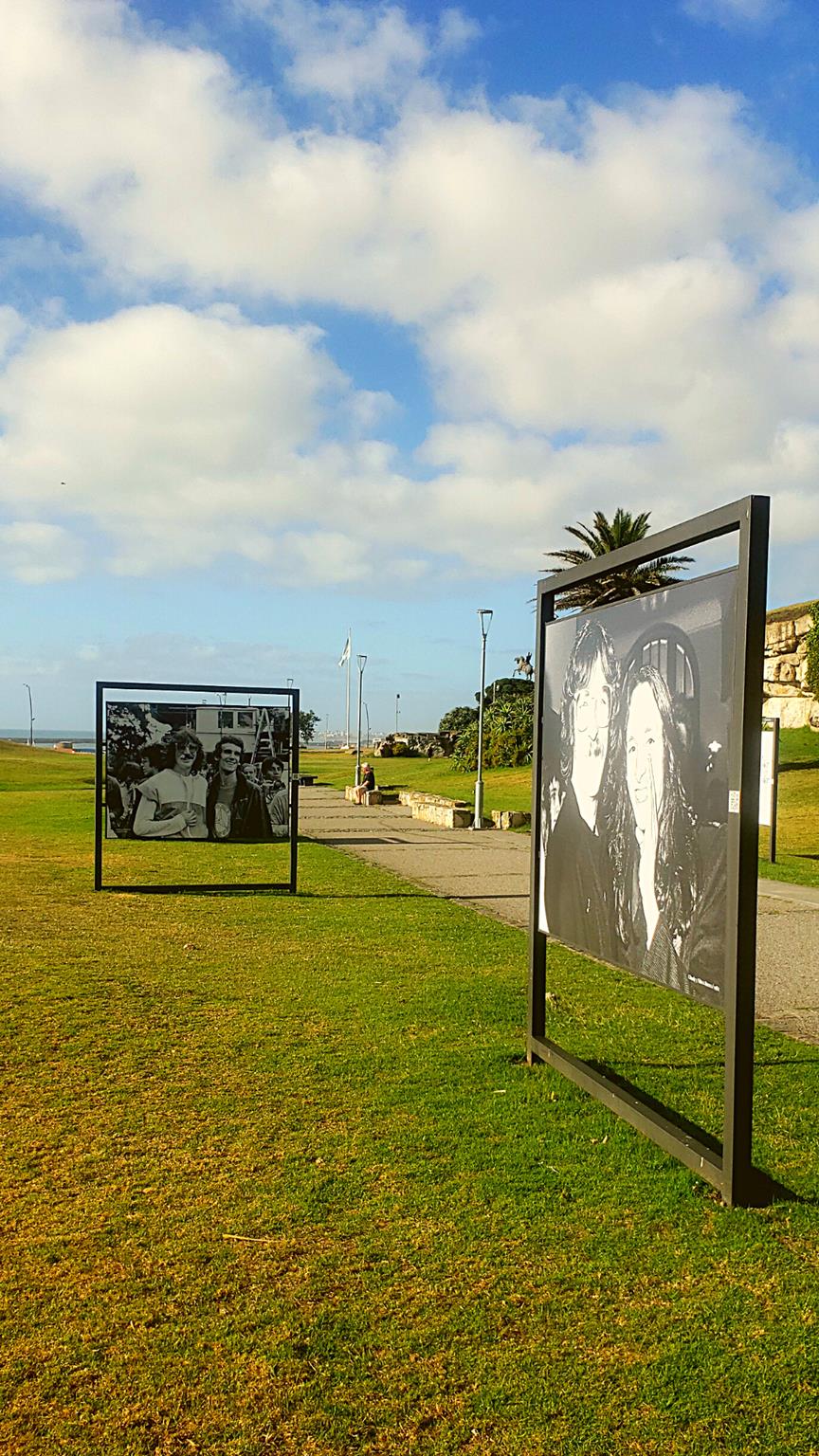
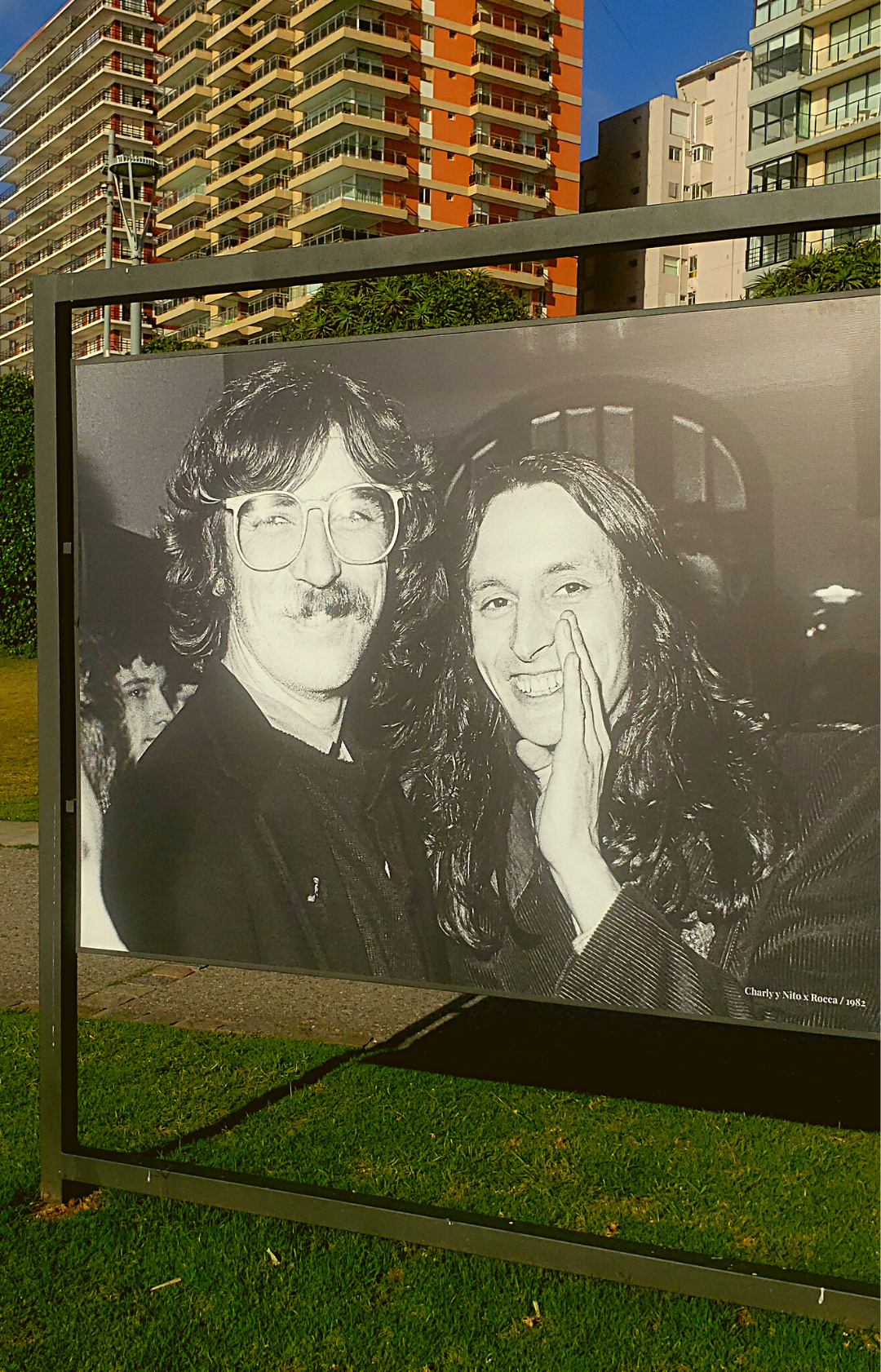
Looking to the right diagonal we find the great singer-songwriter, multi-instrumentalist, composer and record producer Charly García, born in 1951 and considered one of the most important and avant-garde figures in Argentine and Latin American popular music. He is named the father of national rock for his recording work that, both in his multiple groups as a soloist, has a compositional complexity and a transgressive and critical lyric towards modern Argentine society, especially during the military dictatorship, where he was able to let his rebellious, extravagant and anti-systemic personality.
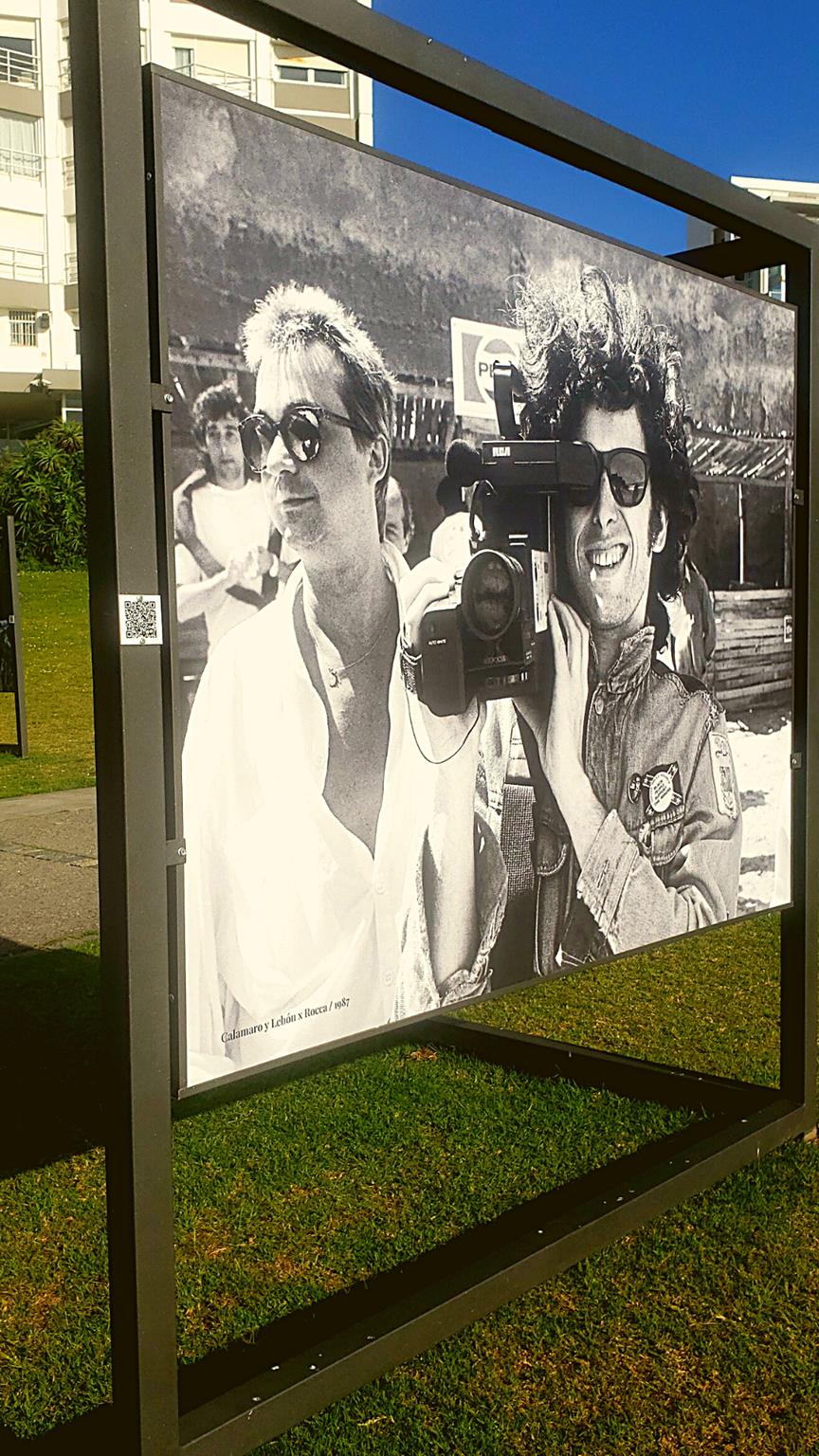
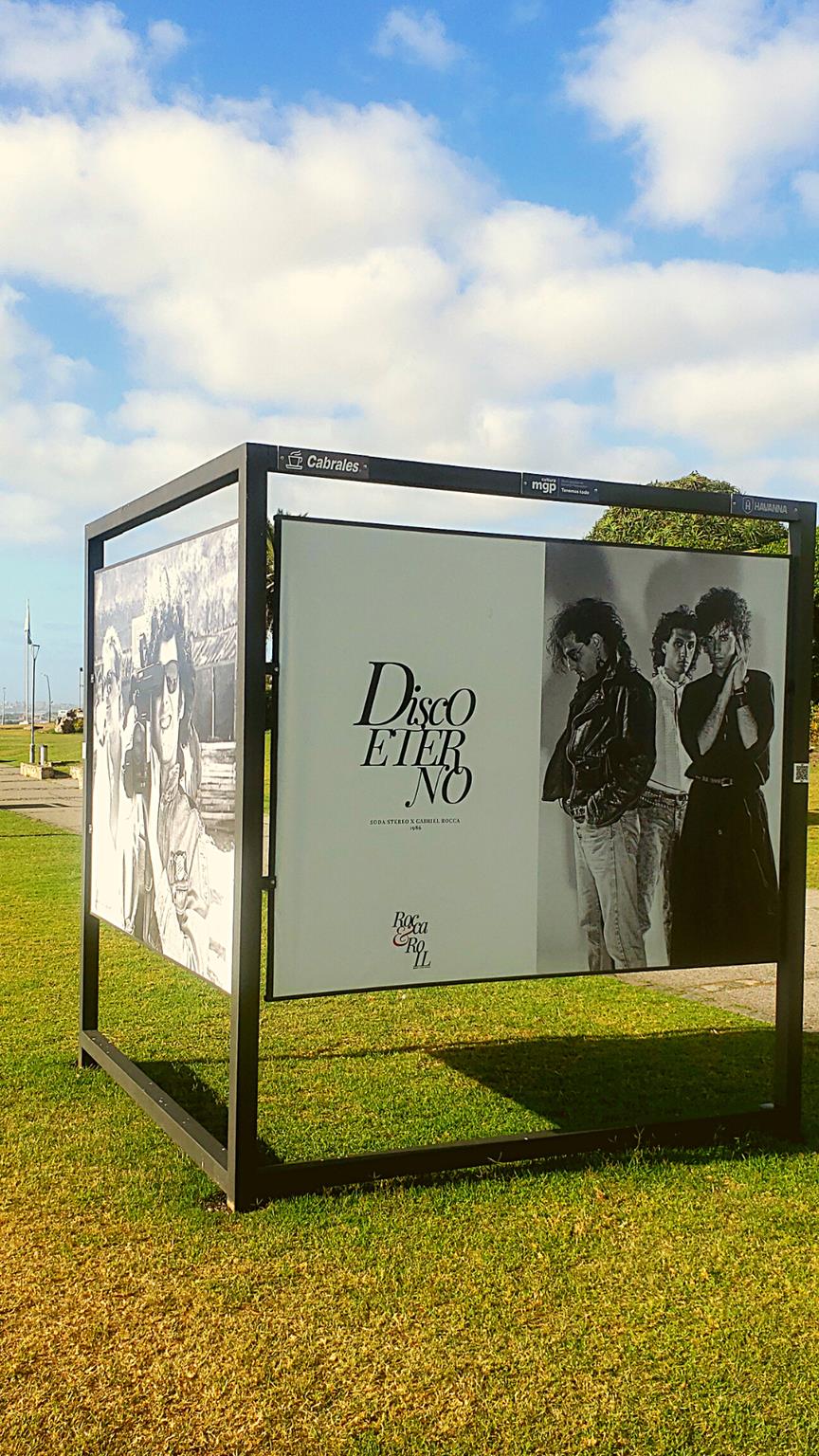
One of the most representative photographs of the national rock scene in Argentina and Latin America is the one that Gabriel Rocca took, almost by chance, of Charly García and Luis Alberto Spinetta in November 1982 when the BA Rock Festival was taking place at the Sanitation Works Stadium. A super natural shot that shows them hugging and smiling. Behind Charly García, almost accidentally, another great Argentine musician Andrés Calamaro is part of the scene.
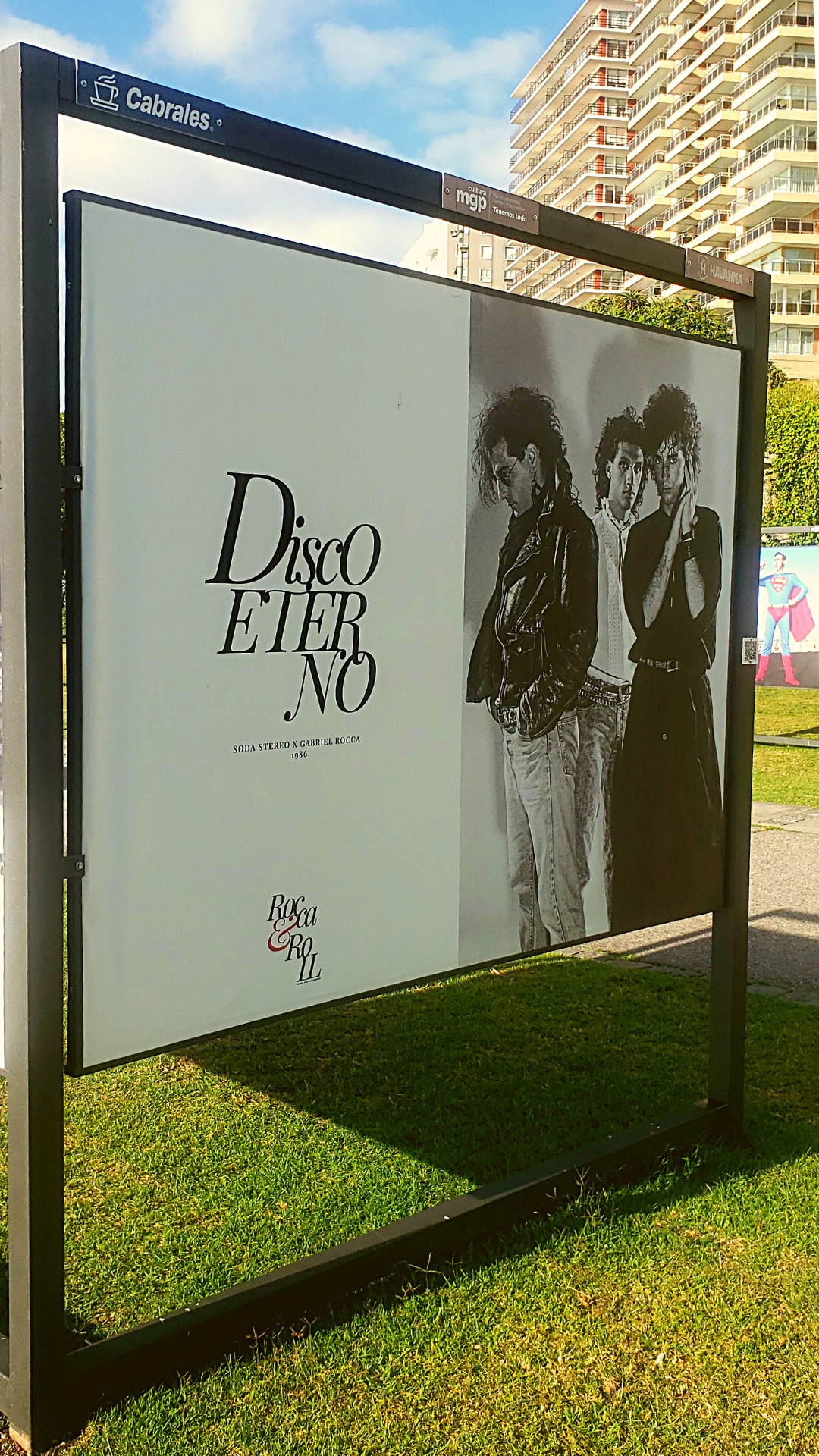
Next to this exhibition is the photography of Charly García, but this time together with the great Nito Mestre, with whom he formed a duo called Serú Girán in 1968, considered one of the most important of the origins of Latin American rock. He went through different formations over time, taking the form of a sextet or quartet as well. Two of his studio albums have been included among the 100 best Argentine Rock albums according to Rolling Stone. Although they only stayed together for 3 years, they left a legacy of precious and well-known songs with a lot of social and political content.
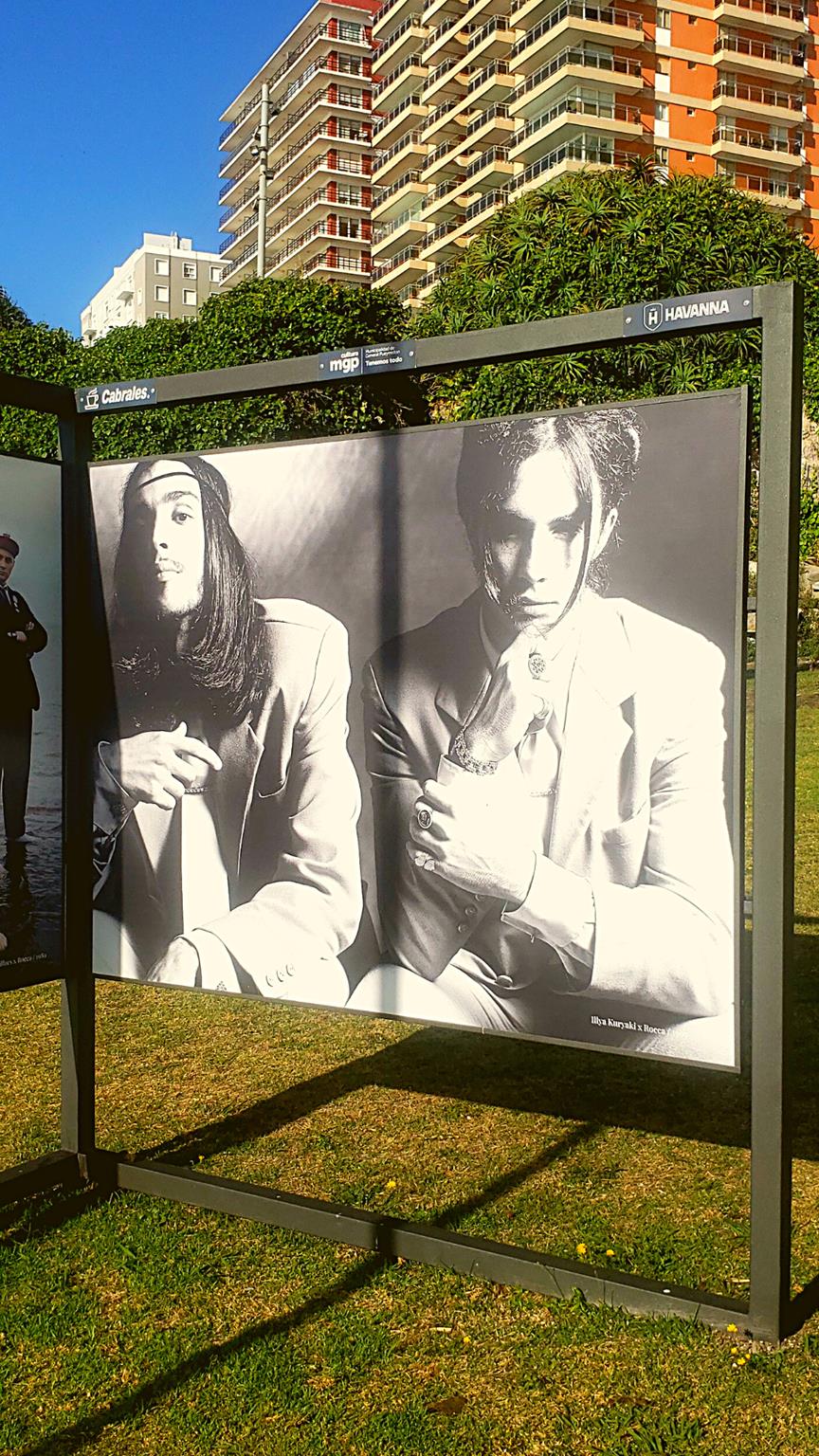
The exhibition continues with a double structure that shows the photographic record for a press photo of the Signos album by an emblematic national rock band called Soda Stéreo, in 1986. It shares a lectern with a photograph that shows the smiling Argentine musician Andrés Calamaro, taking a film camera. At his side, the great musician David Lebon.
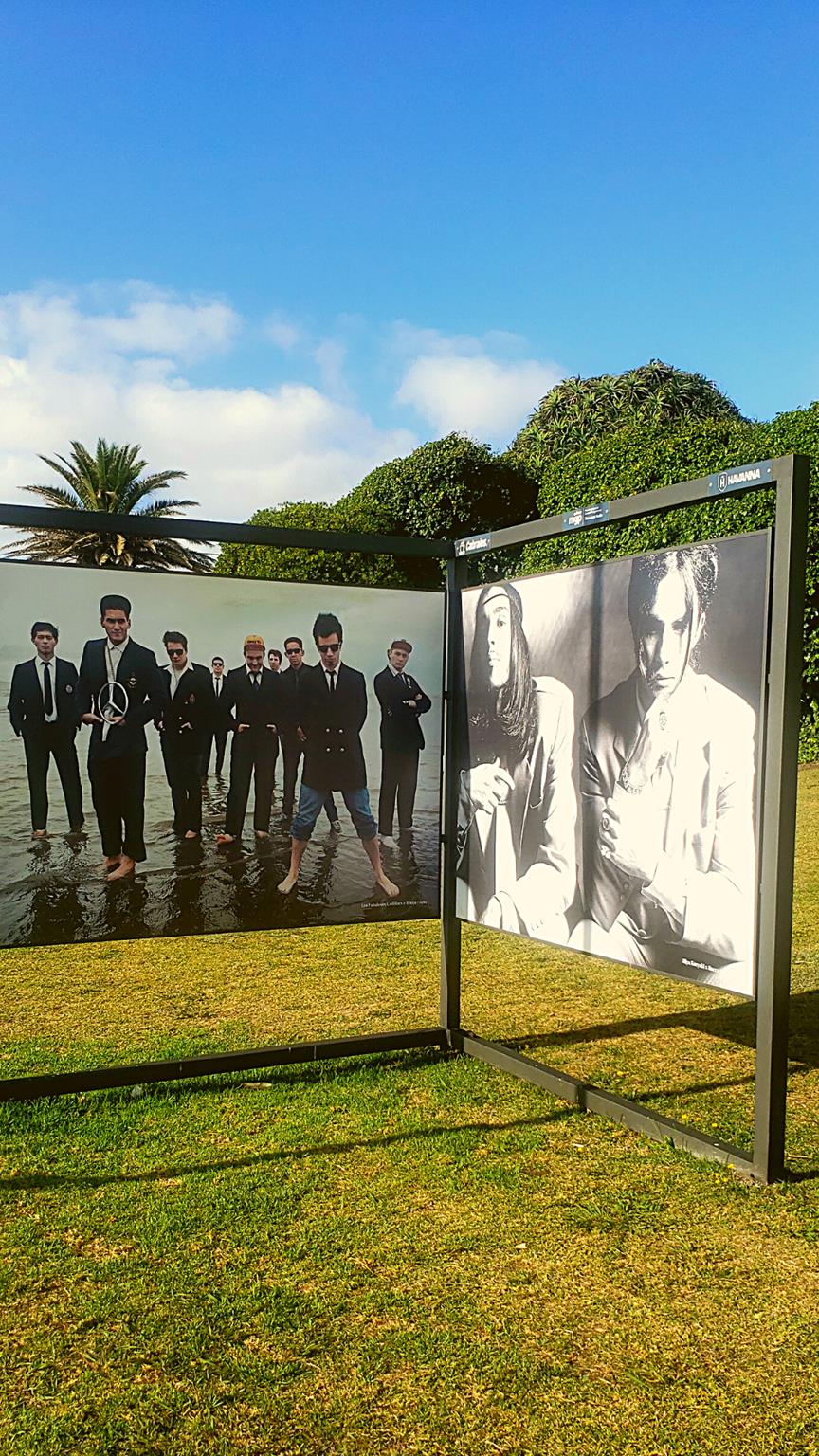
Continuing the tour, through the right wing, we find the portrait that Gabriel made of Miguel Mateos (left) an undervalued artist on the national scene since he is considered the one who truly opened the doors and revitalized rock throughout Latin America, being the emblem of a movement known as Rock in your language. With their band Zas, they were the first Argentines to play in the United States in 1989. Although pop-style instrumental arrangements predominate in their solo career, their lyrics are rebellious and address topics such as political and social claims: political claims, rejection of dictatorial governments, social mandates, problems of the working class. In the photograph he poses with his guitar signed by Tom Petty.
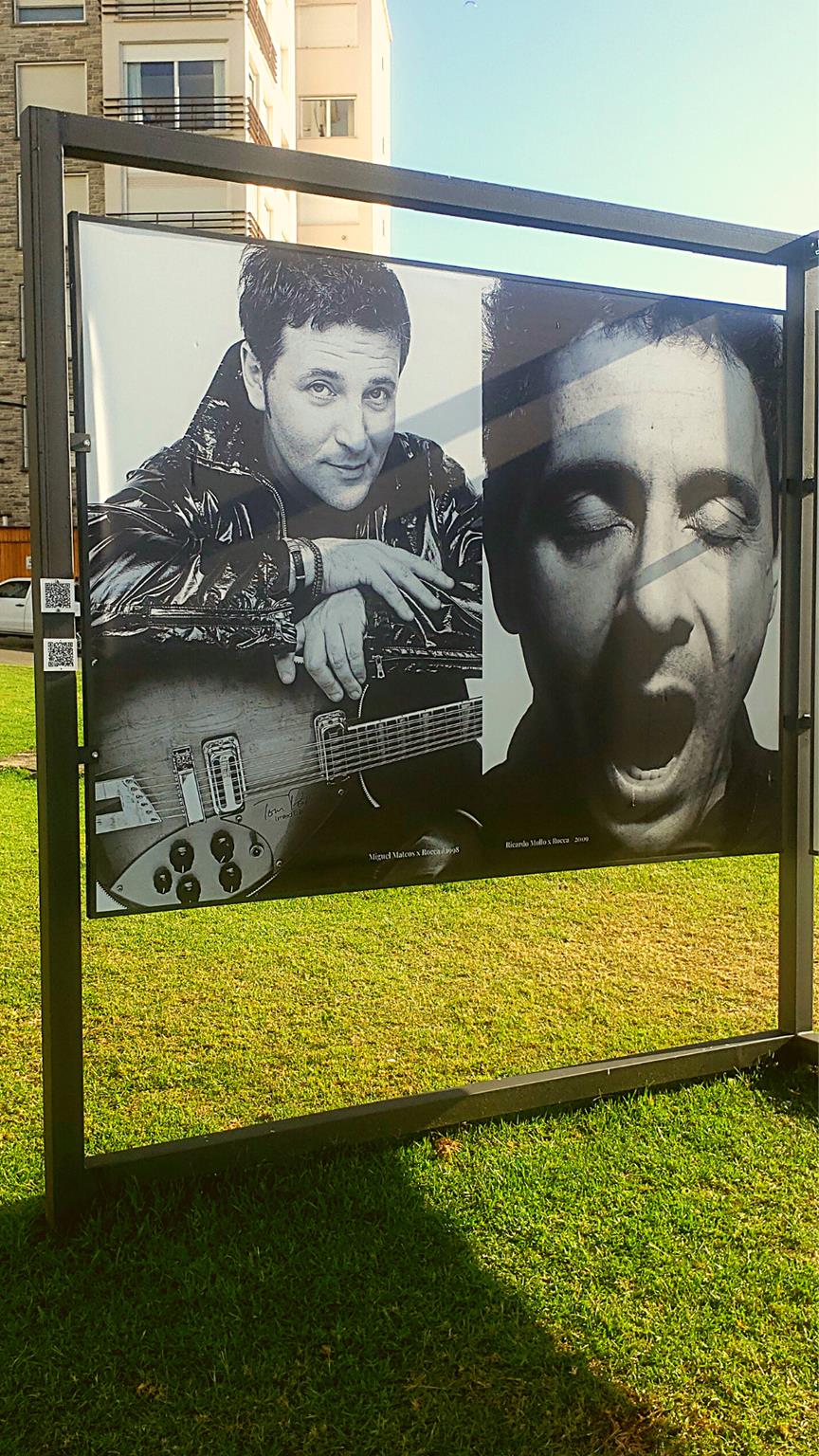
To the right of Miguel we can find Ricardo Mollo, recognized for being part of the Argentine musical movement with three bands: MAM in the ’70s and ’80s. SUMO in the 80s until he formed, in 1988 DIVIDIDOS, a power trio of which he is the leader, guitarist and singer. Considered one of the greatest musicians and composers, extremely virtuoso on the guitar, performing live versions of Jimi Hendrix’s Voodoo Child solo playing the strings with his teeth or with objects that the public is already familiar with throwing at him, such as: sneakers, carrots, flip flops, tennis balls, canes for the blind. But what stands out about Ricardo, beyond his musical talent or his profile as a professional, is the warmth of his person: he always has a friendly and personal treatment with his audience. He produced and participated in records from all eras up to the present and by the most varied artists.
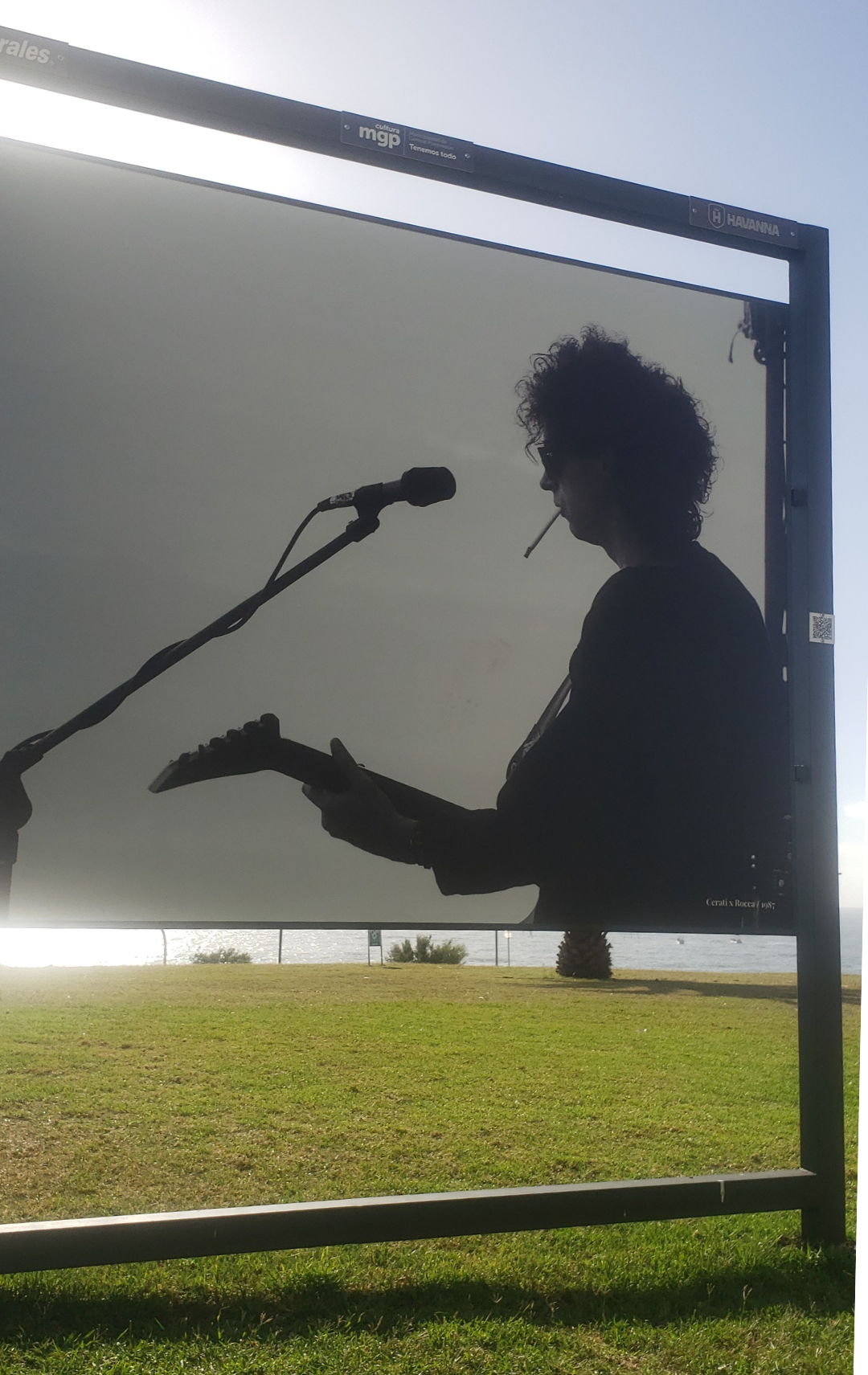
Very close to them we meet again with Gustavo Cerati, but already in a solo photograph. Argentine musician who died in 2014 after suffering a cerebrovascular accident in the middle of the stage, when he performed in the city of Caracas, Venezuela, which kept him in a coma for four years. During his coma, fans held vigils at the door of his house and he received many tributes from local and international artists, such as: Luis Alberto Spinetta, Charly García, Fito Páez, Andrés Calamaro, Shakira, Bono, Joaquín Sabina, Alejandro Sanz. , Mana, etc.
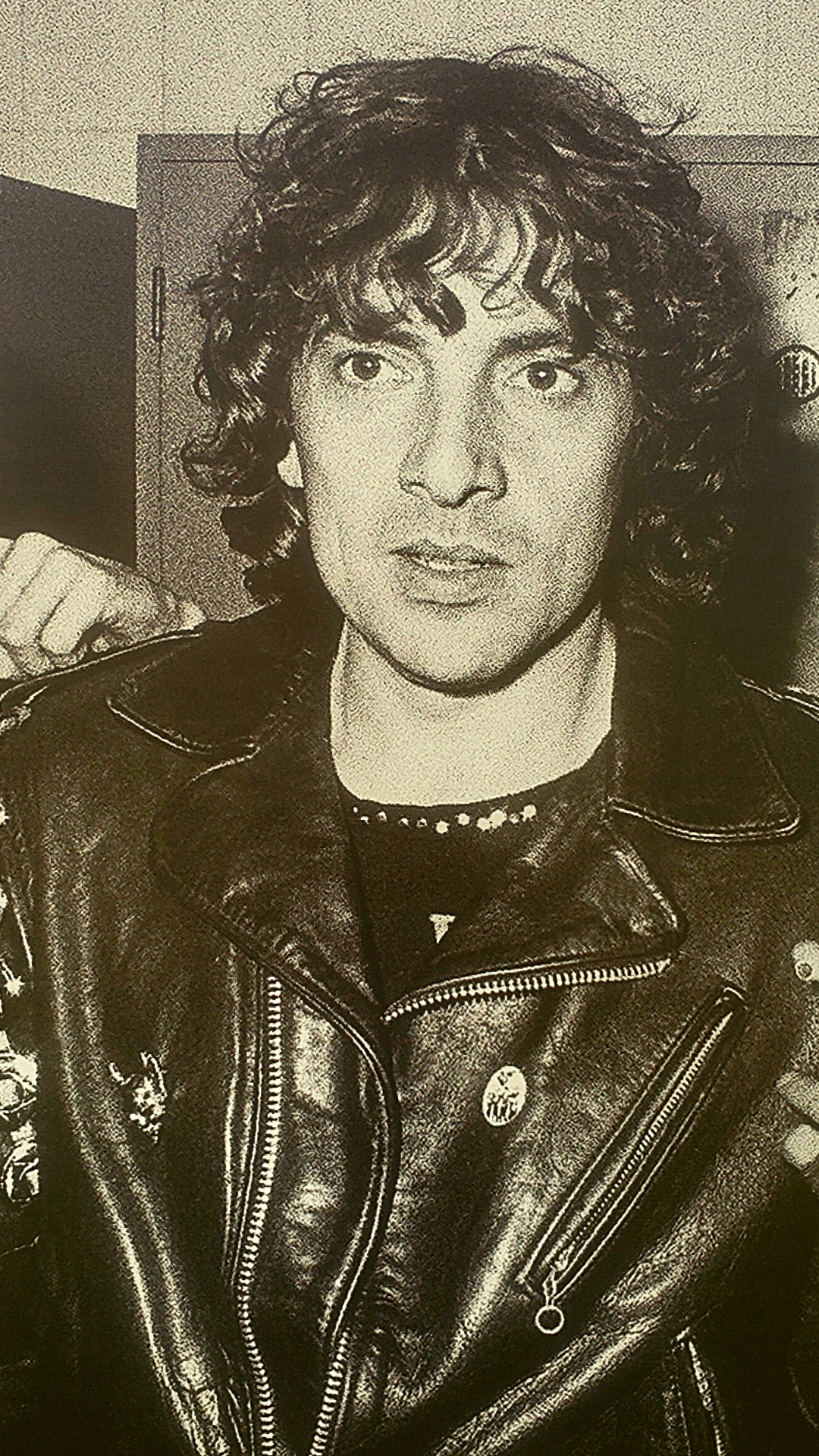
Influenced by British bands such as The Beatles and The Police, he joined different groups until he founded Soda Stereo in 1982. The band would only reach maturity in the 1990s with the release of Canción Animal. Parallel to his career, he worked with Daniel Melero (the album Colores Santos was considered one of the first in South America to include electronic music). His band broke up in 1997 and Cerati embarked on the soloist style. But in 2007 they made presentations after 10 years of separation and managed to gather more than a million spectators on tour. His profile as a prolific loaner led him to participate along with Charly García, Luis Alberto Spinetta, Caifanes, Babasónicos, Los Brujos, Andrés Calamaro, Fito Páez, Shakira, Andy Summers, Roger Waters and Mercedes Sosa. Throughout his solo career he sold more than 7 million records and won numerous awards.
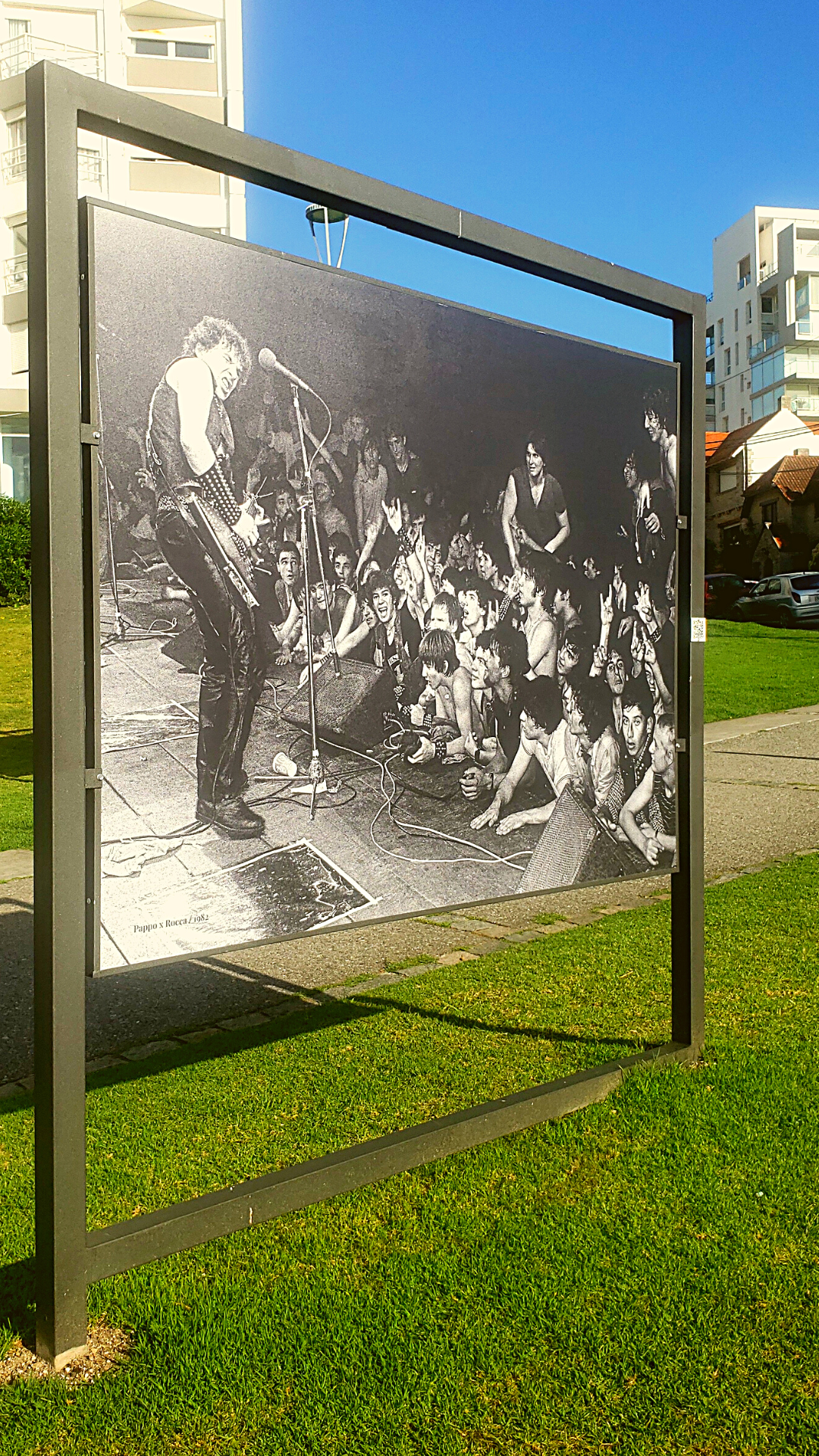
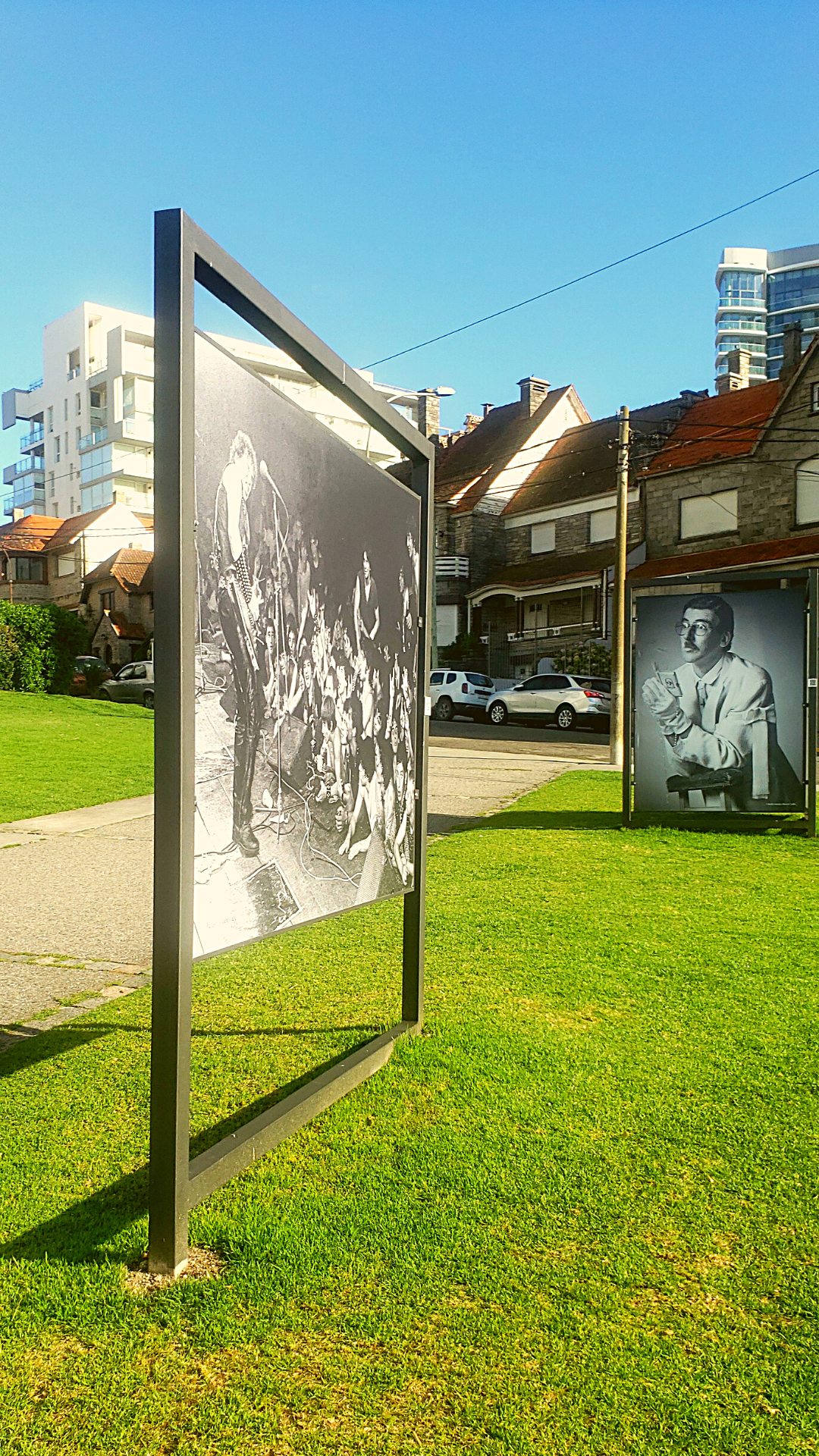
Finishing the tour of the right wing of the exhibition we find the photograph of the virtuoso Argentine guitarist Pappo, in the middle of the show with his band Riff, which is observed by a Charly García dressed as an altar boy, iconographic image, session made for an almanac of the Canta Rock magazine continuing with the Gabriel’s purpose of ironizing through the costumes antagonistic characters of those who were being captured by his lens.

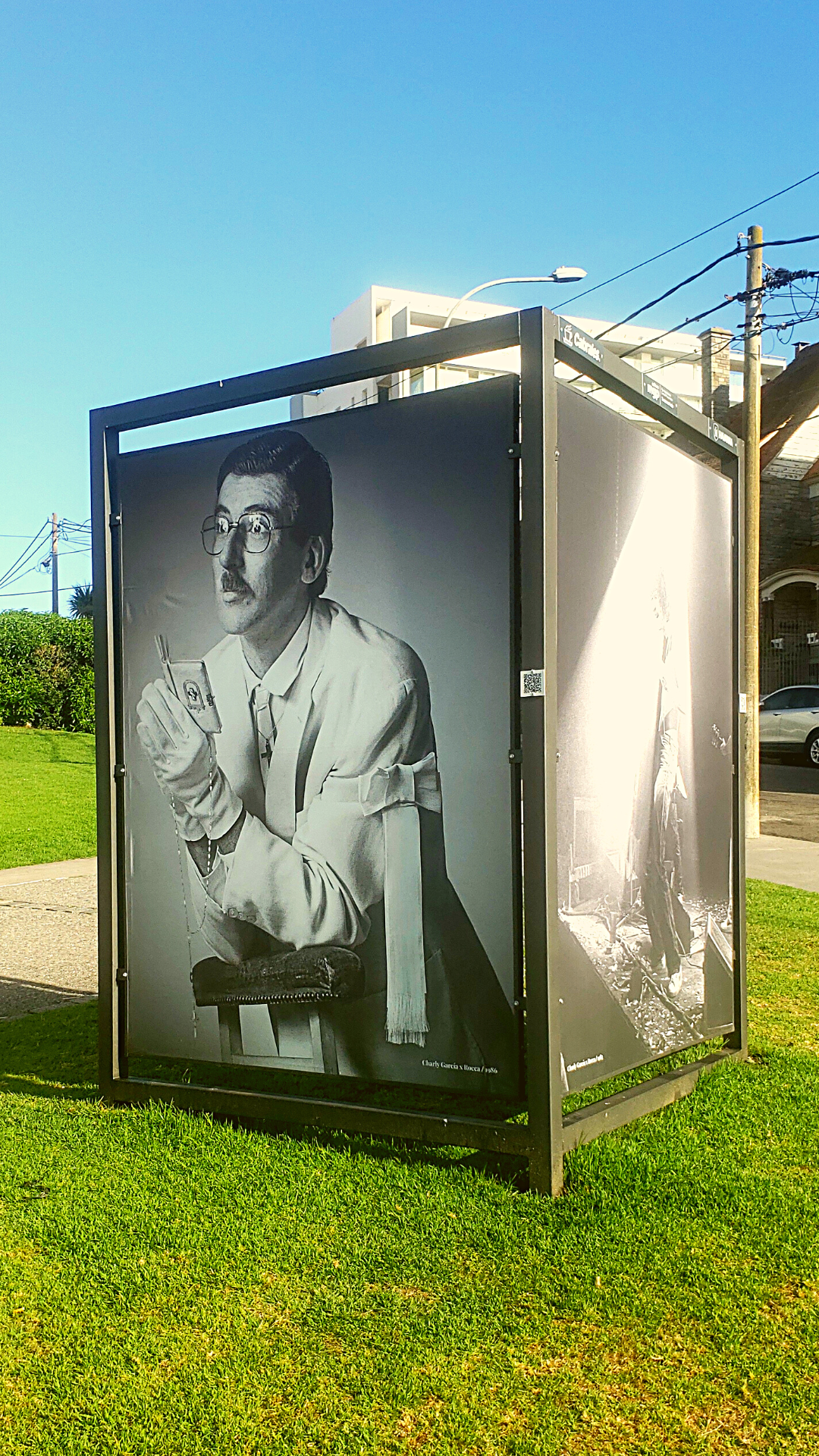
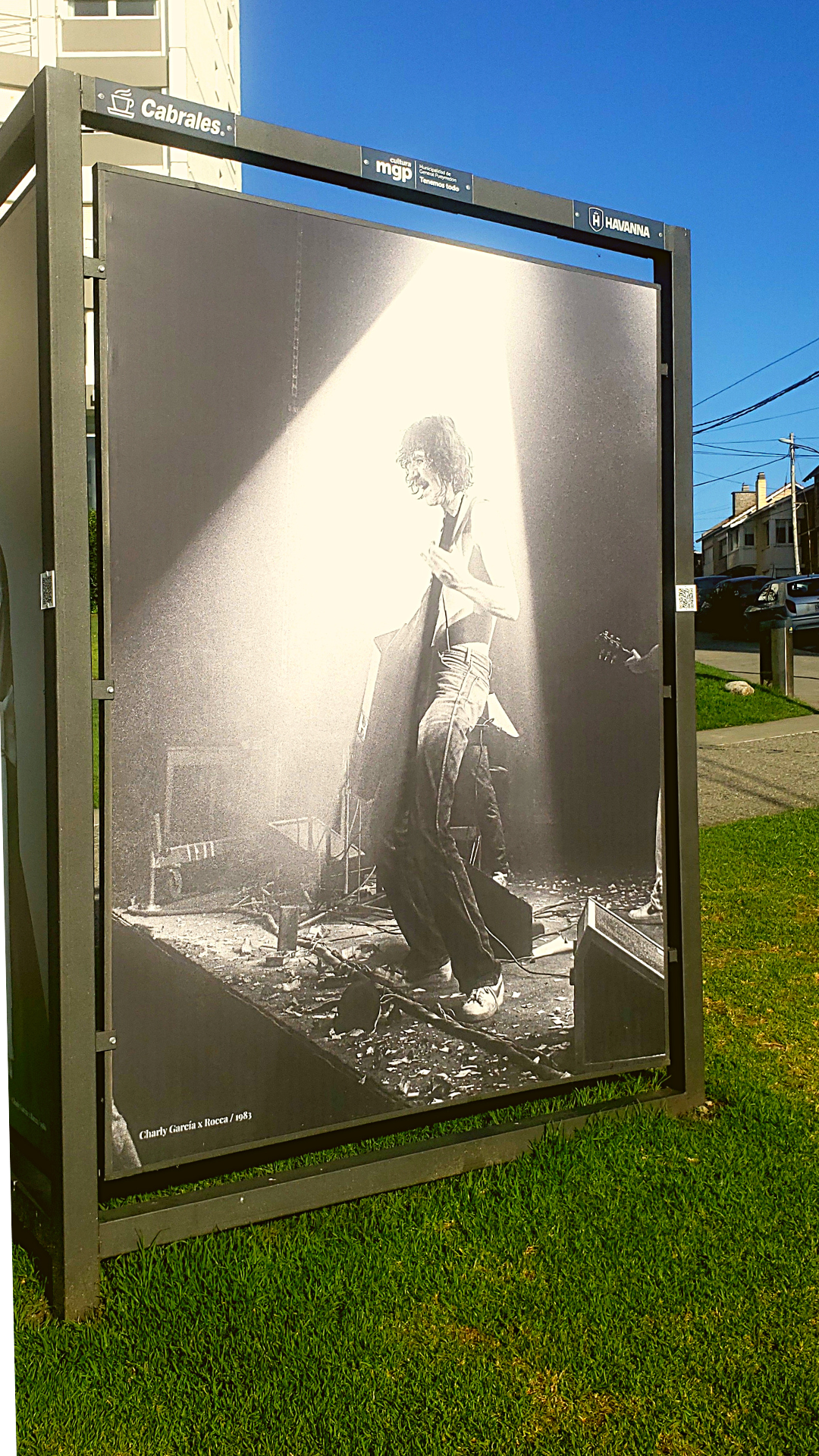
NORBERTO ANÍBAL NAPOLITANO, better known as PAPPO, was an artist on the local scene: musician, guitarist, singer and composer, one of the first to venture into the genre of blues, heavy metal and hard rock. Widely recognized for being the best guitarist in the history of Argentine rock, being B.B. King who defines him as one of the best guitarists of all time and also nicknamed him The Cheesman. He also received the nickname Carpo in allusion to the mastery he possessed when moving the wrist of his hand to play the guitar. He was a member of important rock groups such as Los Abuelos de la Nada, Engranaje, Los Gatos, Carlos Bisso y su Conexión N°5, Pappo y Hoy no es Hoy, Billy Bond y la Pesada del Rock and Roll. He founded the legendary blues rock group Pappo’s Blues, the hard rock band Aeroblus and the historic heavy metal musical group Riff. He founded a group in the United States called “The Widowmakers”.
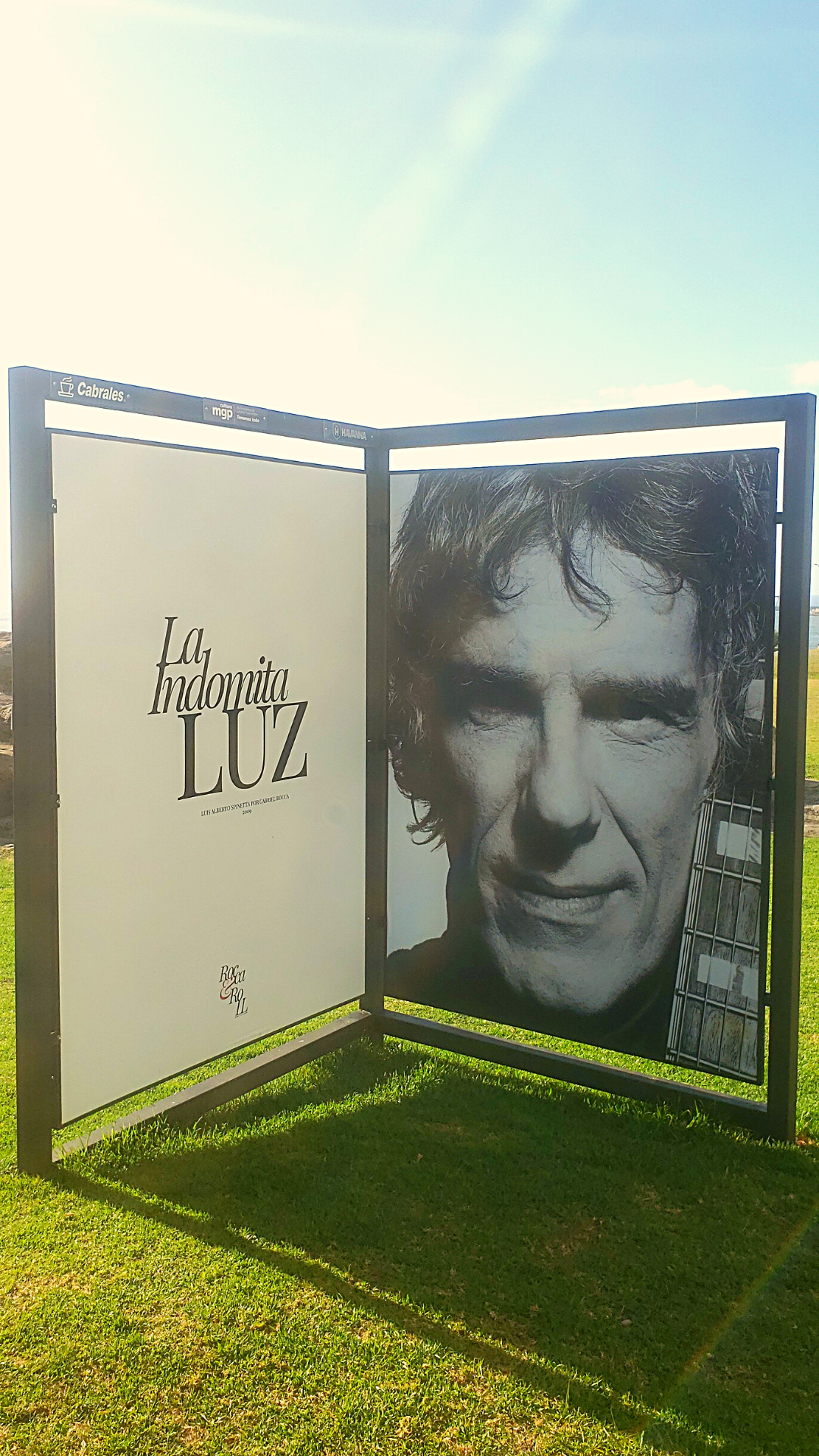
A magical corner of the exhibition and probably the hot spot to take the photograph that every visitor wants to take as a souvenir of the exhibition is the one where Gabriel chose to place the authentic face and penetrating gaze of Luis Alberto Spinetta “El Flaco” in a double presentation. , in one of his be the last photograph that Gabriel could take of Skinny. It is displayed next to a phrase that summarizes Luis’s musical lyric “La indómita luz”. Luis Alberto Spinetta was an Argentine singer, guitarist, poet, writer and composer, considered one of the most important and respected in Argentina, Latin America and Spanish-speaking for the instrumental, lyrical and poetic complexity of his musical works.
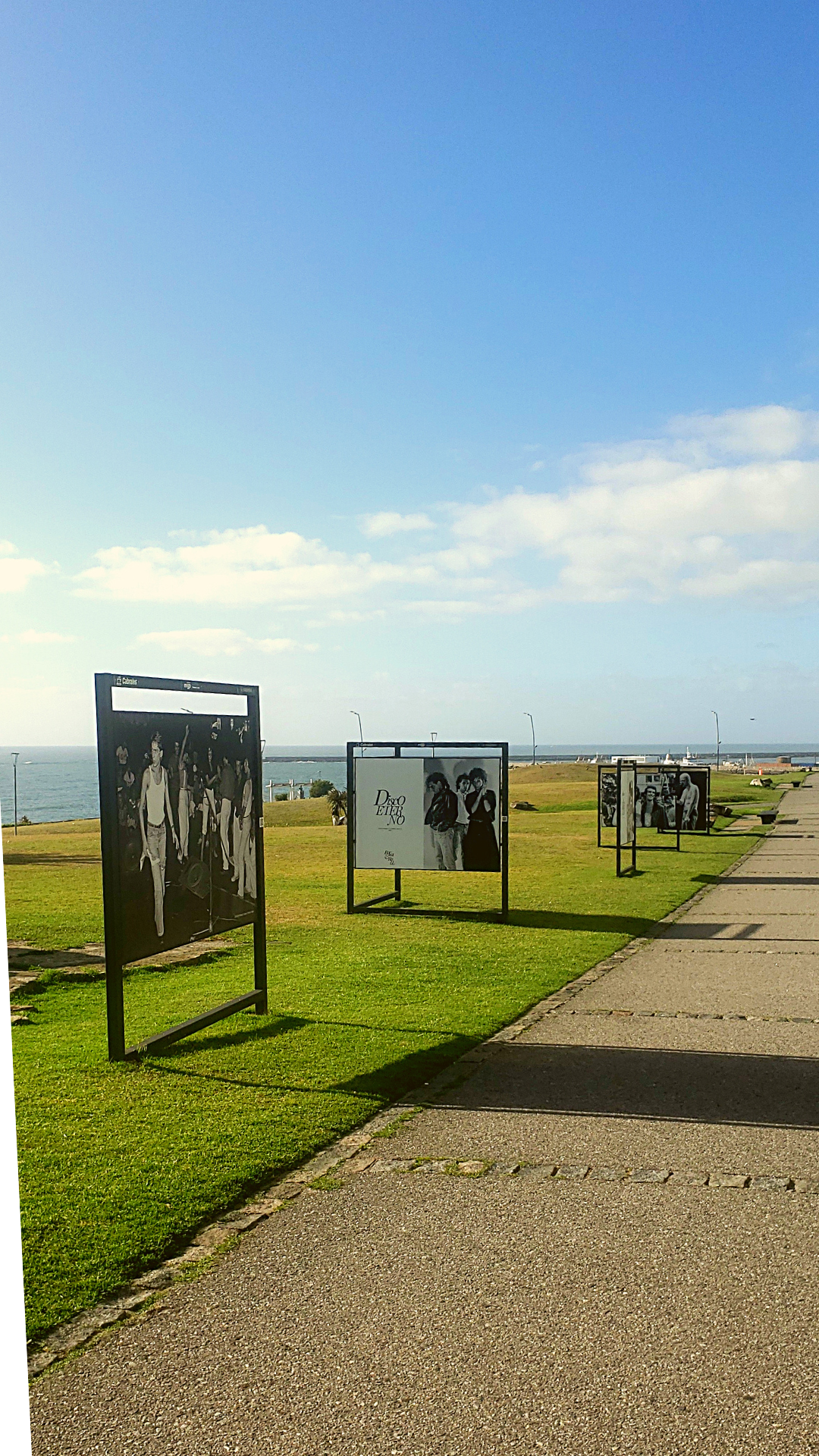
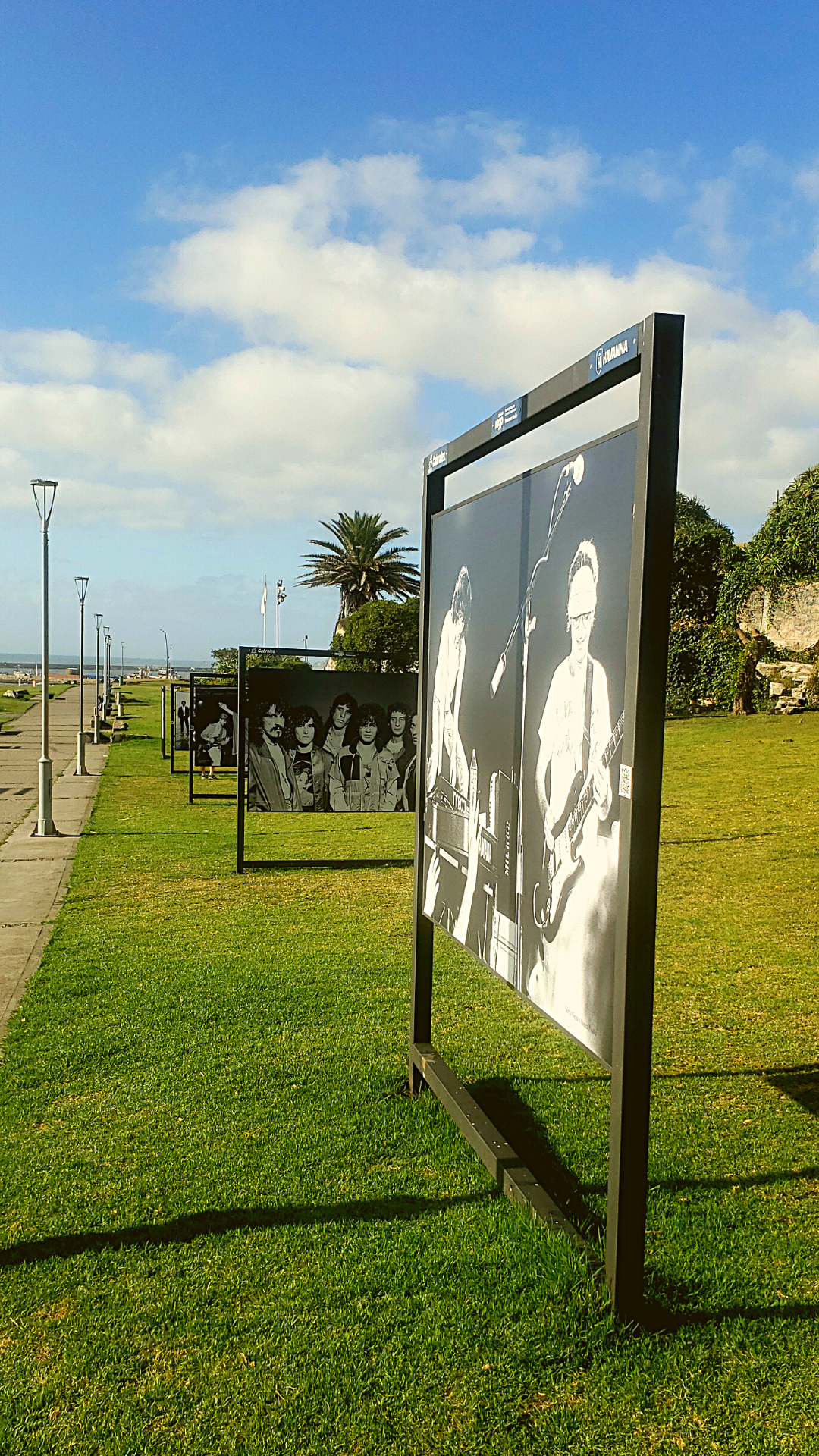
His bands Almendra, Pescado Rabioso and Invisible were extremely influential in the evolution of national and Latin American rock as they introduced genres such as hard rock, blues and progressive rock into the country’s music scene. Later he formed bands such as Spinetta Jade and Spinetta y los Socios del Desierto and published solo albums in which sounds of jazz, pop and electronic music predominated. In 2008 he would release his last album and perform an emblematic recital called Spinetta y Las Bandas Eternas, in 2009, where he celebrated his 40-year career in music with a show in front of 40,000 people that lasted 5 hours and a half.
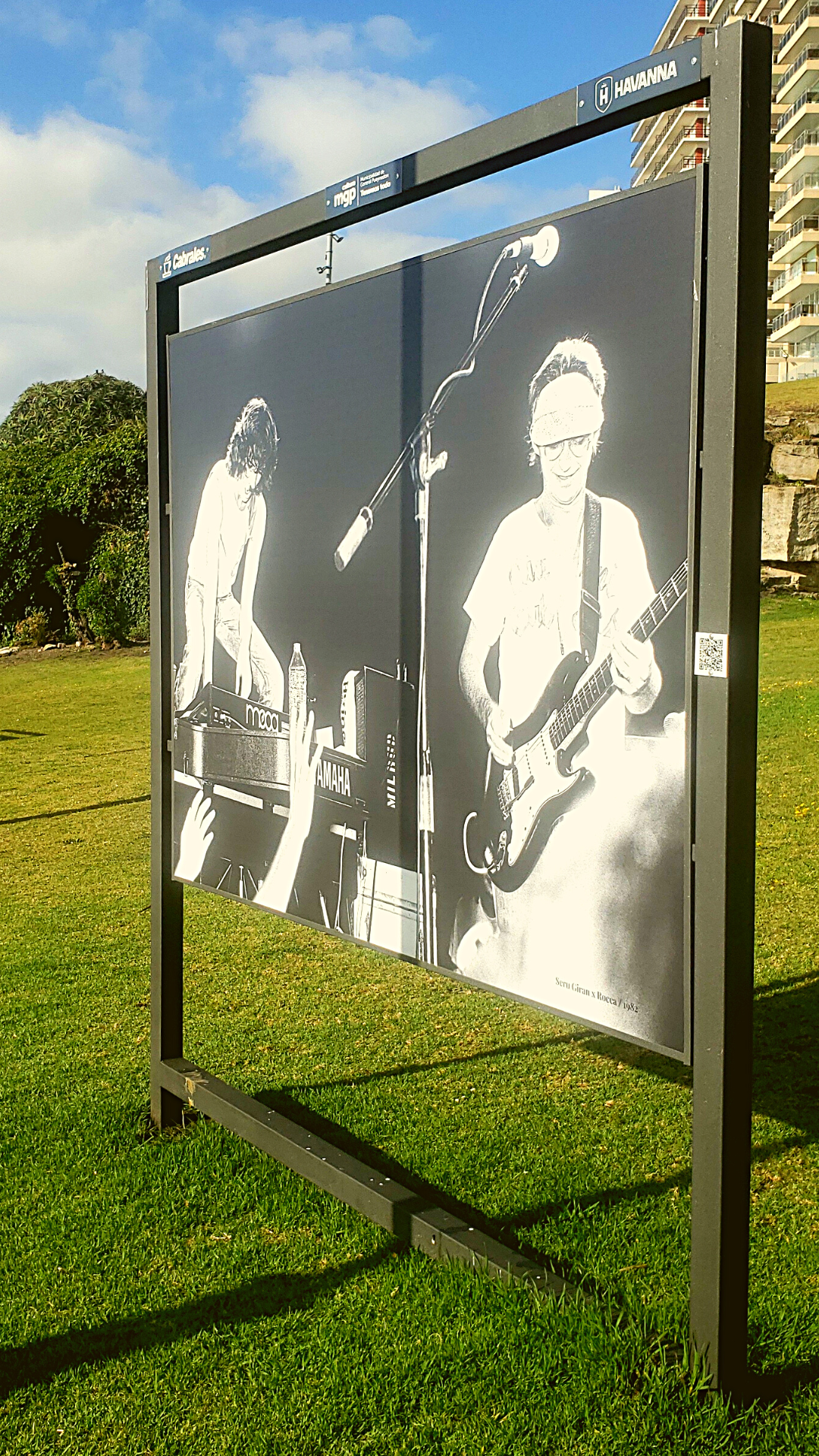

The Argentine Government decreed January 23 as the “National Musician’s Day” in honor of his birth. A sample of the perspective view of the exhibition to appreciate the way in which the photographs fit and play with the different perspectives in this wonderful open-air space just steps from the sea. A reference to Miguel Abuelo, the Grandparents of Nothing and Virus is located below and reminds viewers of the passage of these great artists on the local scene.

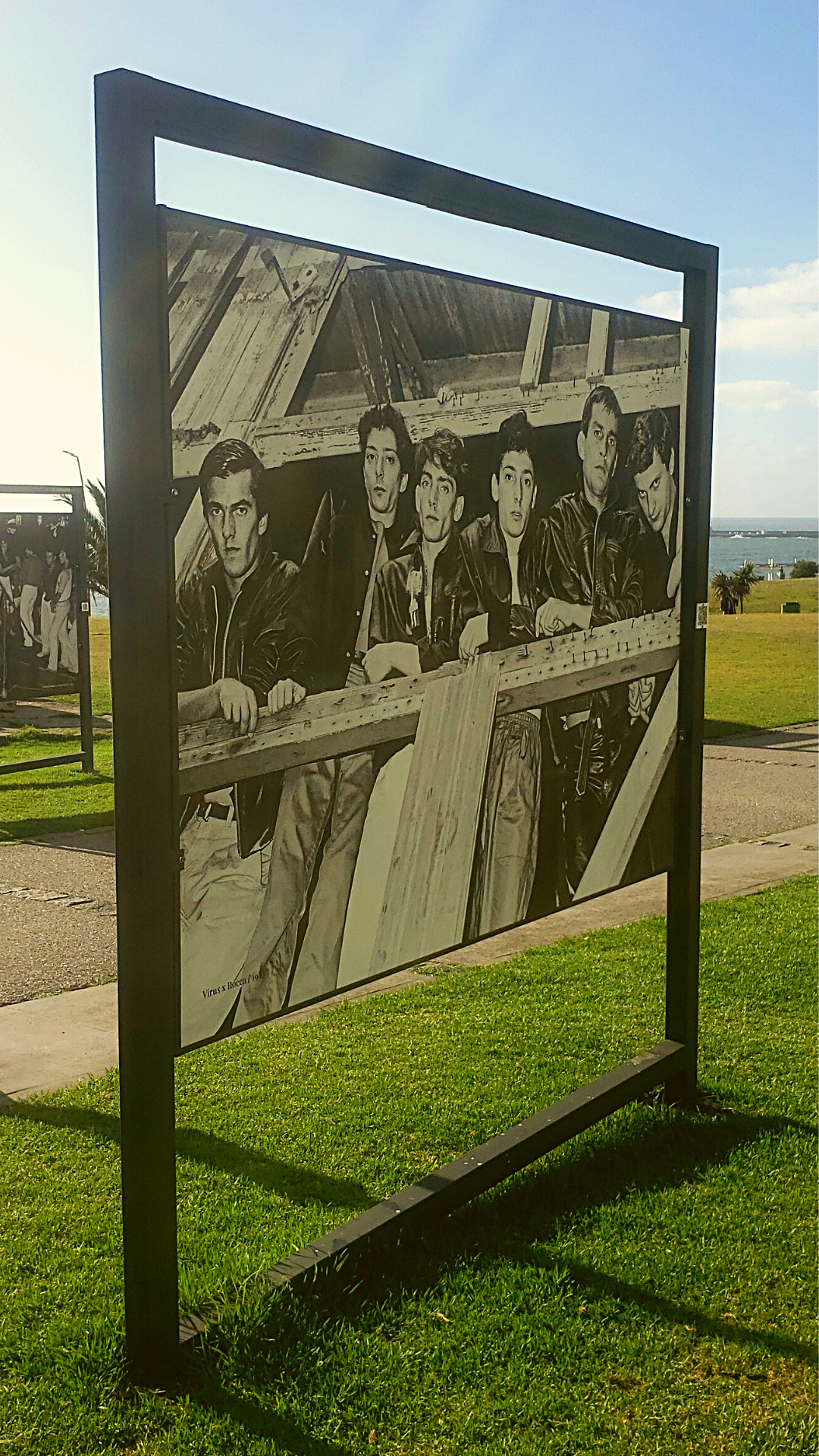
A reference to Miguel Abuelo, the Grandparents of Nothing, Virus and Los Twists is located below and reminds the viewer of the passage of these great artists on the local scene. All bands from the 80s that were characterized by moving music and lyrics, some ironic, others funny, the latter characteristic being the introduction of women to their formation. A 1982 photograph immortalizes another of the great national rock duos, Serú Girán. In 1983 Gabriel immortalized Charly García, Fito Páez and GIT in an image. Pedro and Pablo could not be absent from the exhibition, a folk rock duo with protest songs composed by Miguel Cantilo and Jorge Durietz created in 1968 but after a few years the group dissolved since one of the members went into exile in Spain.
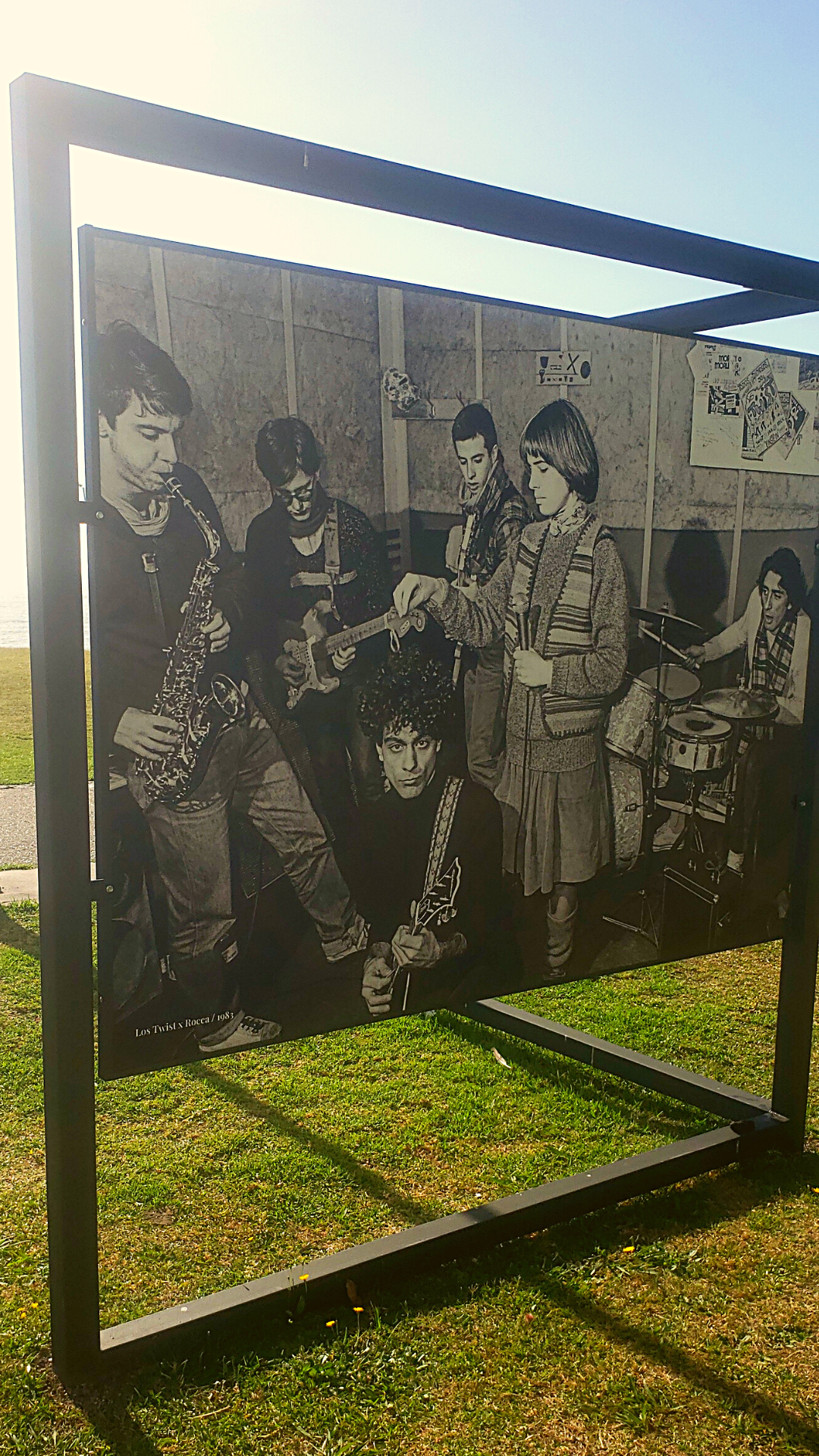
Counteracting the black and white images, to the left of Pedro and Pablo is a photographic composition that Gabriel made of the Argentine musician Pedro Aznar, following the guidelines of his antagonistic photography. That is why Aznar is seen dressed in a Superman suit. The photo taken on the terrace of the Aznar house, located in the Nuñez neighborhood, tried to confront Pedro’s personality, an absolutely low profile with the idea of a superhero, since he was always considered by local critics as the most gifted and virtuous of national rock, the child prodigy of rock emerged from jazz. Singer, multi-instrumentalist, composer and poet, member of several bands but dedicated to solo music since 1993. He has released more than 30 albums including studio albums, live recordings, soundtracks and duets with musicians such as Charly and David Lebon. In addition to having 200 of his own compositions, he has 120 covers and arrangements of songs by British, North American and Latin American musicians.
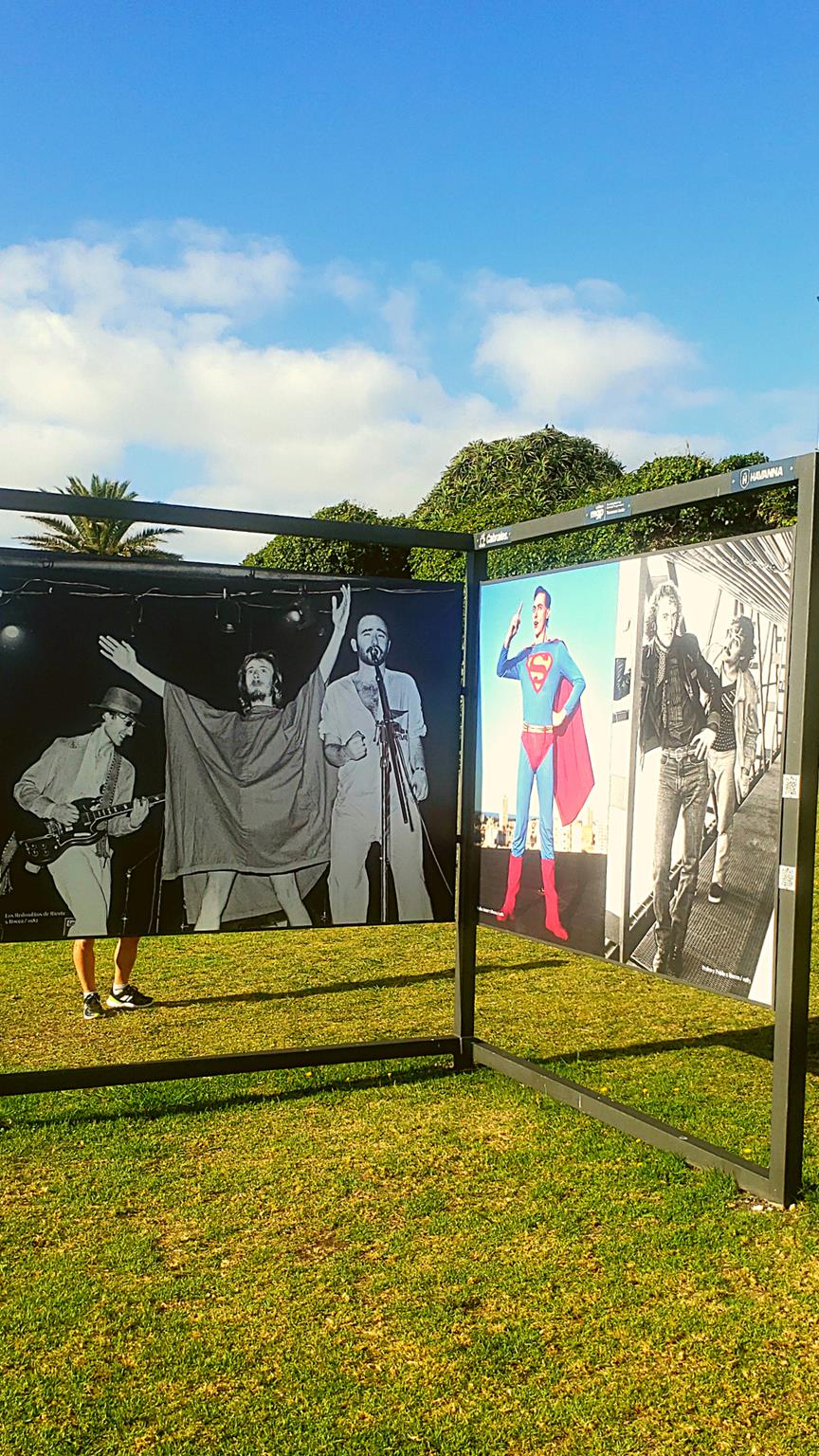
To Pedro’s left, and with a totally different appearance from the record we all have in our memory, is Indio Solari, still with hair, who was captured by Gabriel’s lens along with the members of Patricio Rey y Sus Redonditos de Ricota. National Band in force from 1976 to 2001. Despite their separation, two of its main members continue to (almost) the present with solo projects. Summarizing the career and history of Los Redondos is practically impossible, so we invite you to learn more about them by seeking information on this renowned band that always kept a low profile, making cryptic and mysterious statements.
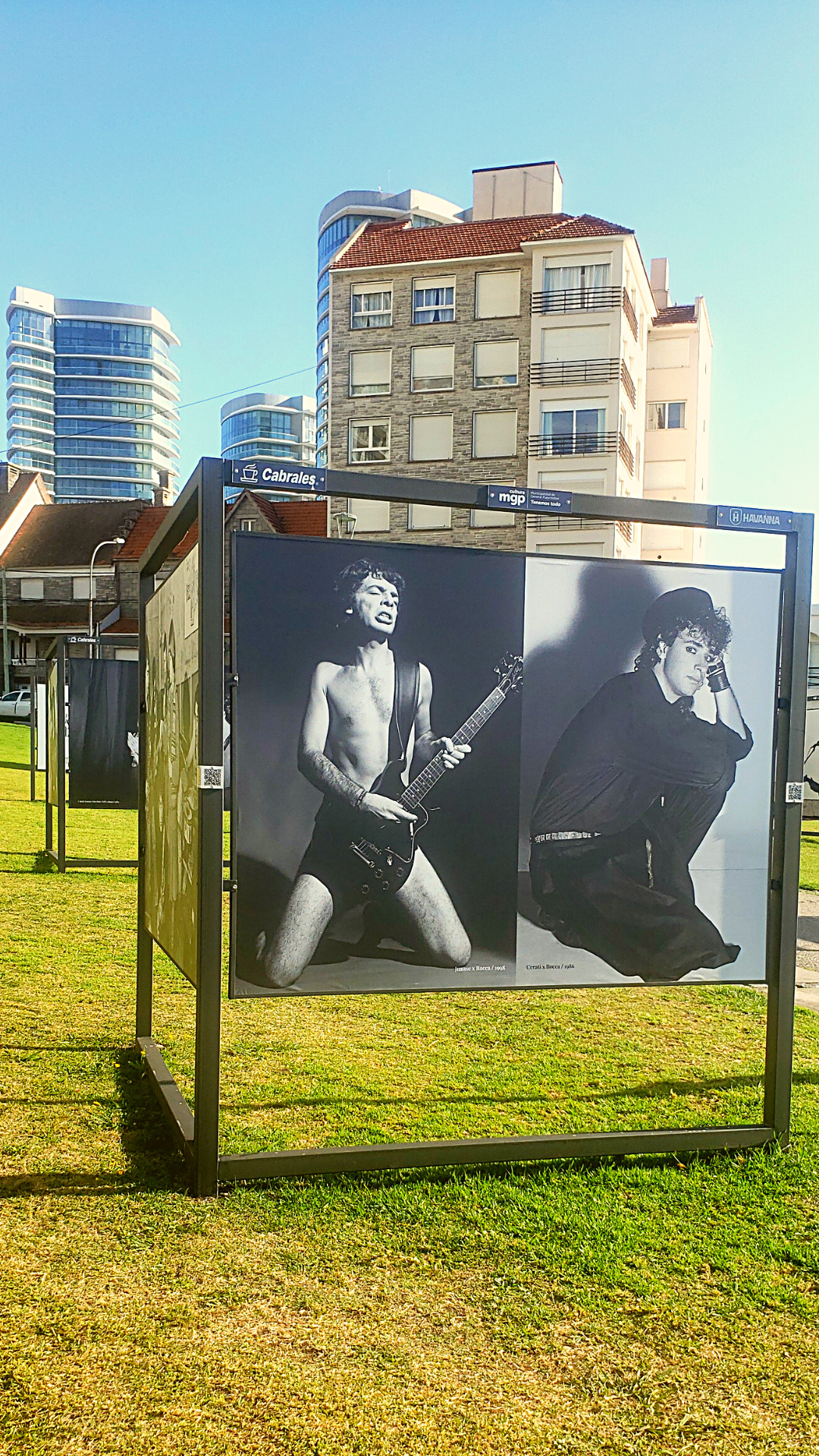
A double structure shows two photographs of more current music bands, such as Los Fabulosos Cadillacs and Illia Kuryaki & The Valderramas, although both photos were taken ten years apart. The cycle of male artists ends with two photographs: a new shot of Gustavo Cerati in the same photo session for the album Signos, from 1986, and on the left the photo of Juanse, leader of the Argentine rock band Ratones Paranoicos. The open-air exhibition reserves a space, although notoriously smaller, for the influential women of national rock of those times.
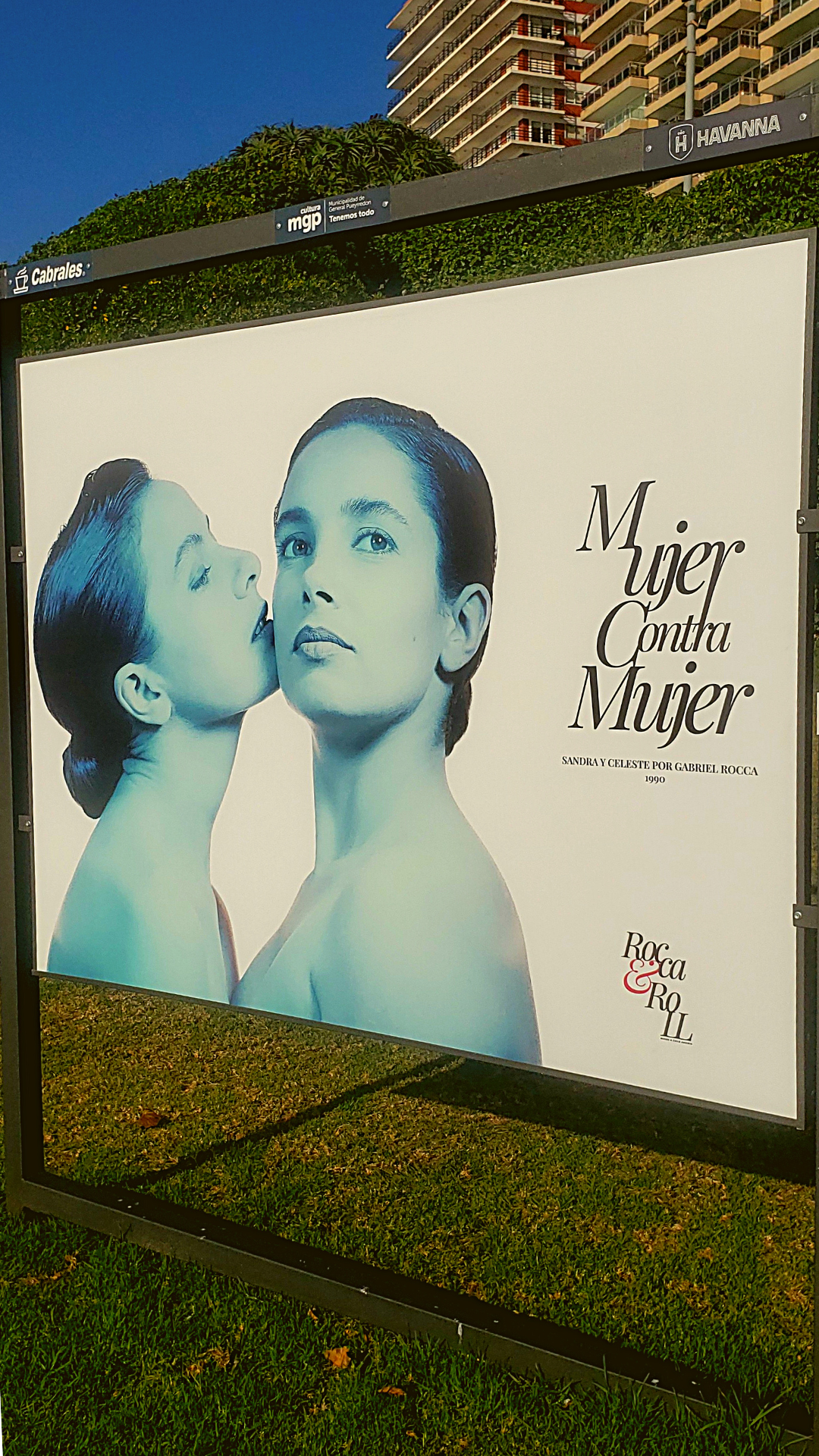
The four tough girls of national rock have been characterized by their transgression and strong personality. The most revolutionary photographic shot in this sense was the one taken by Gabriel, in which he innocently represents the genuine love that Sandra and Celeste, a couple at the time, felt at that time, using the graphics for the album co-authored by both and which they led the name of Woman against Woman. In the 90s, when there was still no social acceptance of gay couples, this cover art generated a social division between those who accepted the bet and those who absolutely rejected the context. Sandra y Celeste was a melodic pop rock group made up of singers Sandra Mihanovich and Celeste Carballo.
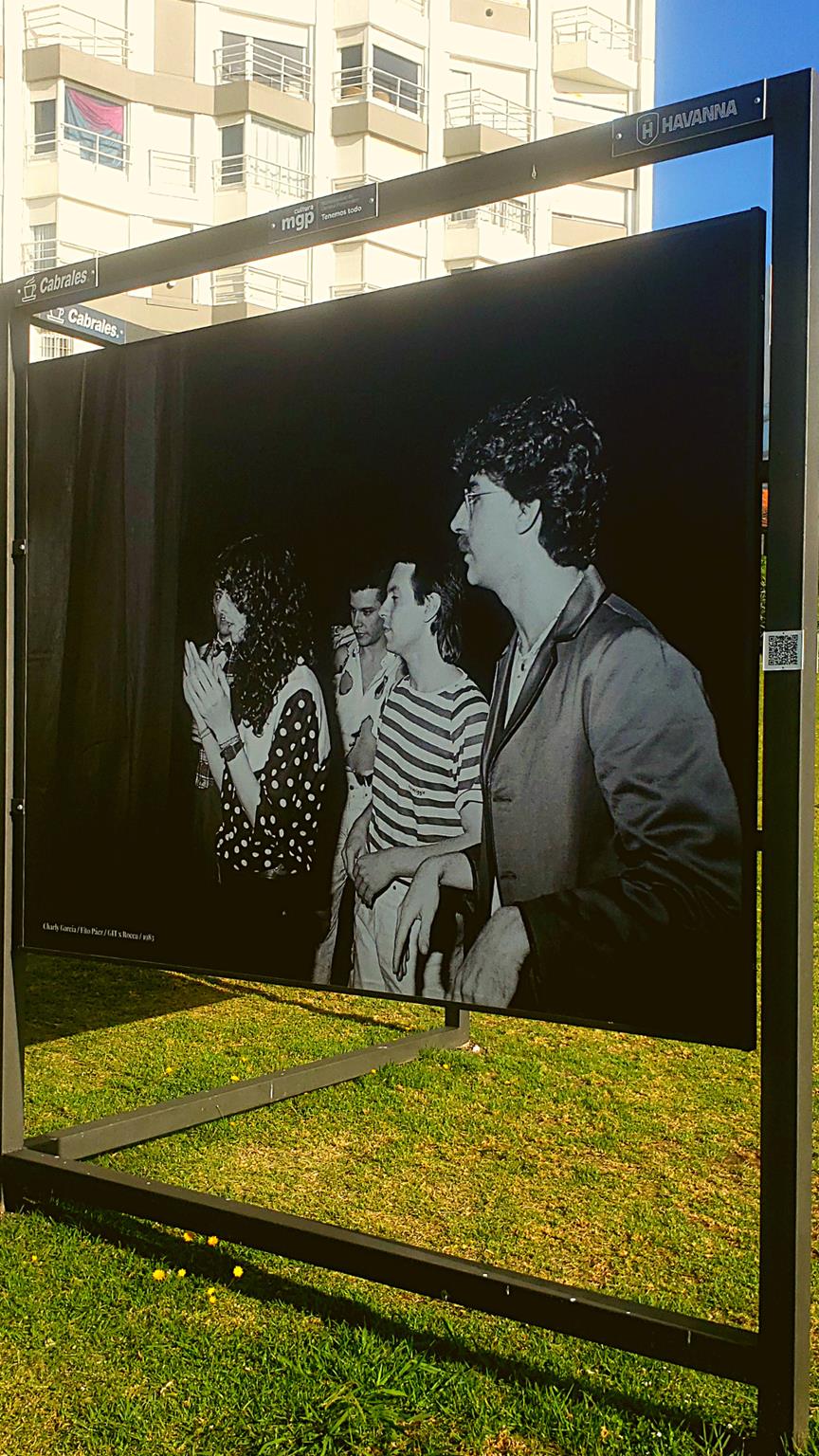
Fabiana Cantilo is an interpreter, singer, rock and pop composer, as well as an actress. She is considered one of the most important female voices in national rock, selling approximately 6 million records. She has been a showgirl and has worked together with almost all of the national artists exhibited in the show. For her part, Patricia Sosa is a singer, composer and also an actress, who in the mid-’70s led the group Nomady Soul, in the ’80s the group La Torre and then began her solo career, arriving with her first album and a week after its release, to be a platinum record.
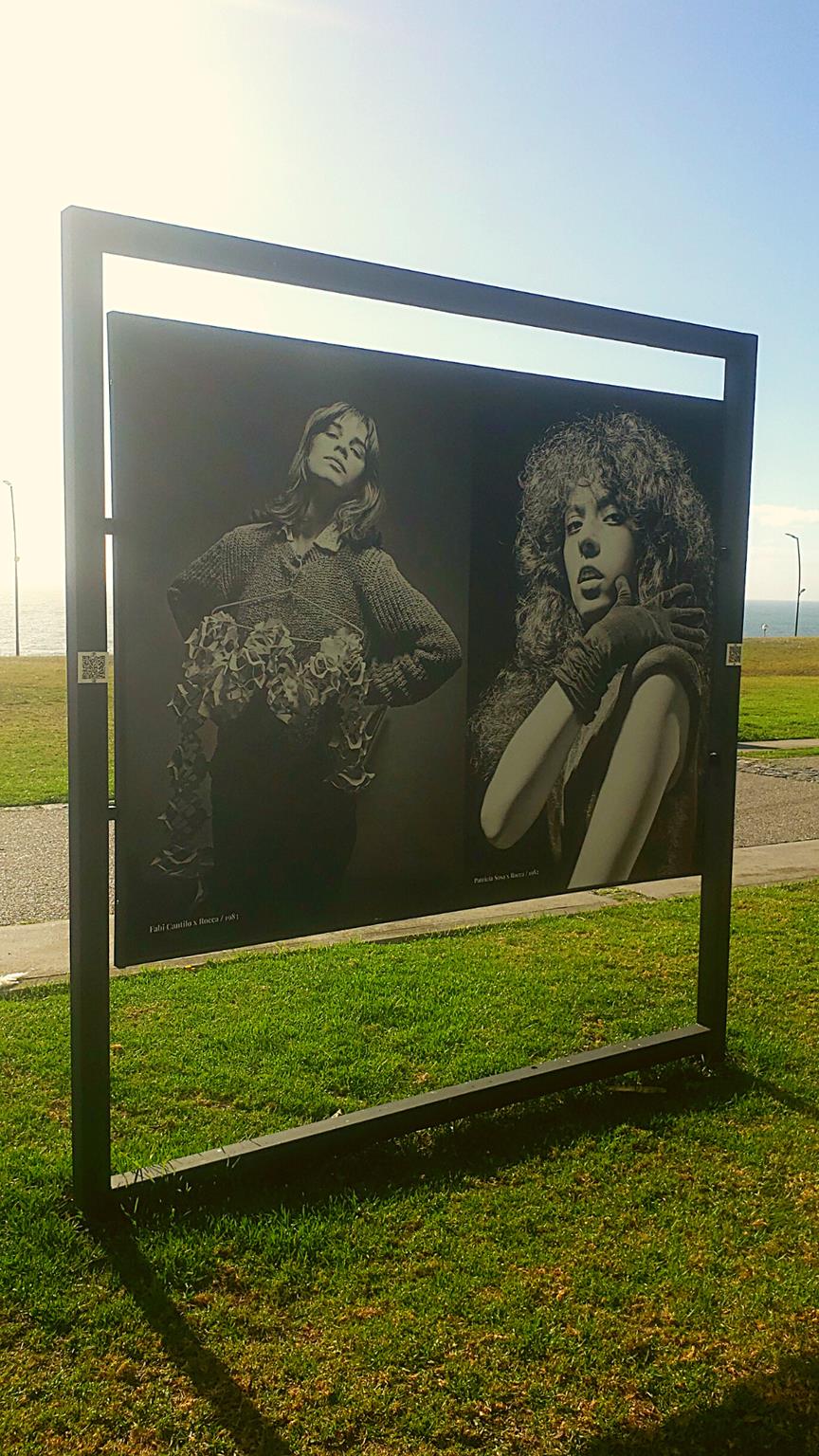
A final review by Gabriel Rocca, taken from his website describes:
Gabriel Rocca is amongst the most prestigious and distinguished photographers in Argentina and South America. Throughout his stellar 40 year-long career, he photographed famed rock stars and also played a formidable part in the industries of fashion, cinema and sports, ranging from Diego Maradona to the esteemed Kate Moss. Rocca is a trademark, acclaimed by his show-stopping fashion campaigns, as well as his superb performances as film Director in advertising clips and producer in Tv format, reaching the eyes and hearts of people around the world, extending his influence to all South America, Mexico, Spain, Italy and the United Kingdom. He has also continued to publish a number of photographic books, in addition to exhibiting his long life works in various Museums around Argentina, where he has reached the total sum of 120.000 spectators. He is based in Argentina. Mexico, Uruguay and Chile are its other bases, it has production houses, the same as in Europe and now Asia is added to its radar.
The event was supported by Cabrales y Havanna.
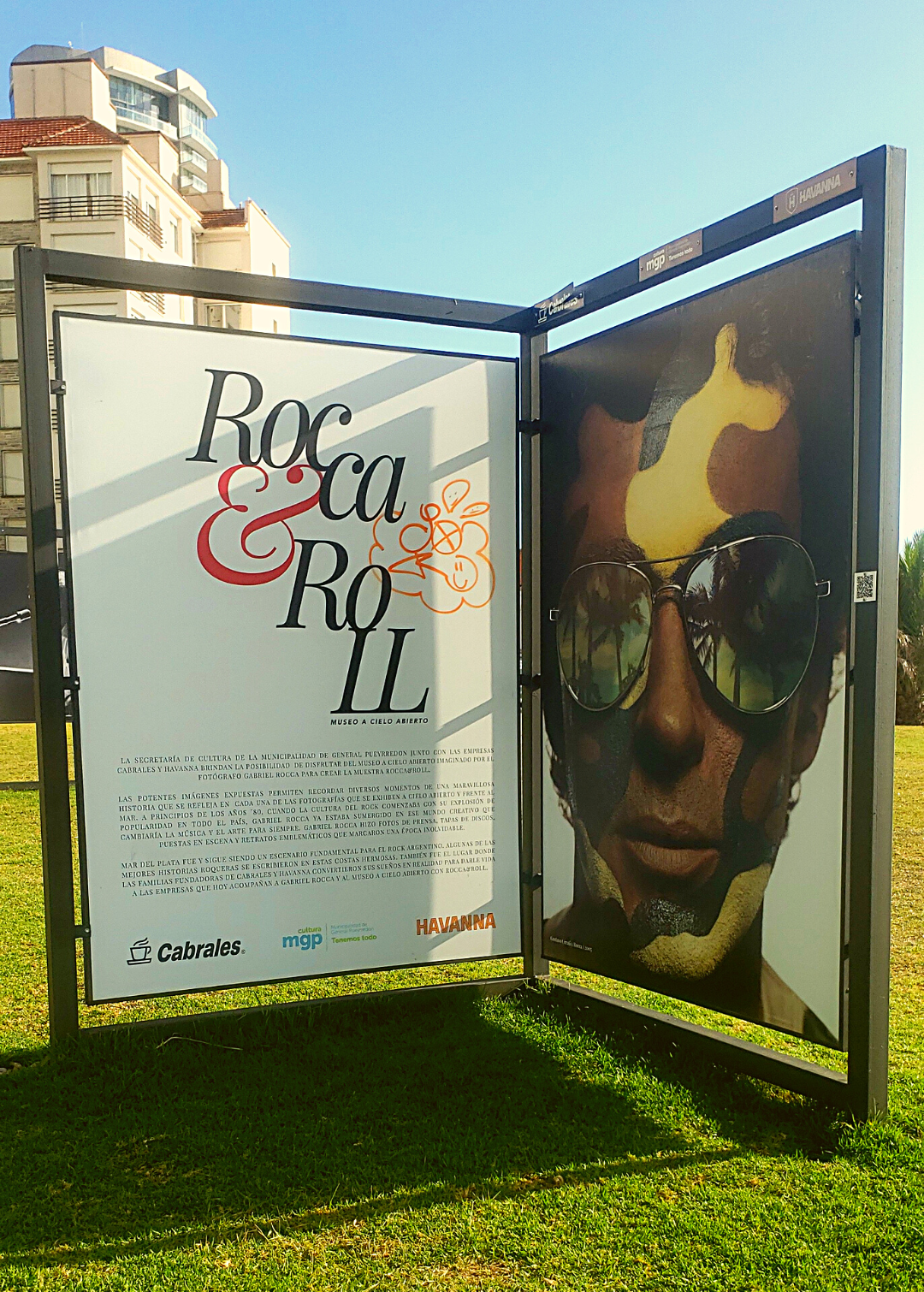
Video about ‘Rocca & Roll’ by Plan Diseño
INFOTHEK
![]() Artist: GABRIEL ROCCA
Artist: GABRIEL ROCCA
![]() Website: https://www.gabrielrocca.com
Website: https://www.gabrielrocca.com
![]() Instagram: https://www.instagram.com/gabriel_rocca
Instagram: https://www.instagram.com/gabriel_rocca
![]() LinkTree: https://linktr.ee/gabrielrocca
LinkTree: https://linktr.ee/gabrielrocca
![]() Youtube: https://www.youtube.com/@gabrielrocca9974
Youtube: https://www.youtube.com/@gabrielrocca9974
![]() Photographer: ANALÍA PERTUSI aka PERTS JAM
Photographer: ANALÍA PERTUSI aka PERTS JAM
![]() Facebook: https://www.facebook.com/PertsStreetArt
Facebook: https://www.facebook.com/PertsStreetArt
![]() Instagram: https://www.instagram.com/pertsjam
Instagram: https://www.instagram.com/pertsjam
![]() Instagram: https://www.instagram.com/pertsstreetart
Instagram: https://www.instagram.com/pertsstreetart
![]() Profile Page: https://vagabundler.com/culturists/analia-pertusi
Profile Page: https://vagabundler.com/culturists/analia-pertusi
RECOMMENDABLE GRAFFITI SPOTS IN BUENOS AIRES
>>> Embellecimiento Urbana <<<
>>> Bajo Nivel Nazca <<<
>>> Por Una Cabeza <<<
>>> Jirafa Monte Cristo <<<
>>> Plaza del Árbol <<<
>>> Tecno Rasta <<<
>>> Cultura Chamán <<<
>>> Collection Vehiculos <<<
>>> Tags & Paroles Archive <<<
MORE ARTICLES ABOUT ARGENTINA
>>> Painter Murdock Allen <<<
>>> Germán Aczel Comics <<<
>>> Streetart Buenos Aires <<<
>>> Streetart Victoria <<<
>>> Victoria – Architecture <<<
>>> Streetart Rosario <<<
>>> Streetart Nicolás Arroyos <<<
>>> Streetart Palermo <<<
>>> Streetart San Telmo <<<
>>> Streetart Recoleta <<<
>>> Purmamarca – Siete Colores <<<
>>> Calilegua Nationalpark <<<
>>> Pucará de Tilcara <<<
>>> Buenos Aires – Reportage <<<
>>> Quebrada Termas de Reyes <<<
>>> Paseo de los Colorados <<<
>>> Art of the Andes <<<
>>> Streetart Andes <<<
>>> San Pedro de Jujuy <<<
>>> Tilcara – Andes Comunidad <<<
>>> Lama Andes Sanctuary <<<
